fast fashion
description: retail concept for moving clothing from the catwalk to consumers quickly, with rapid turnover of product
95 results
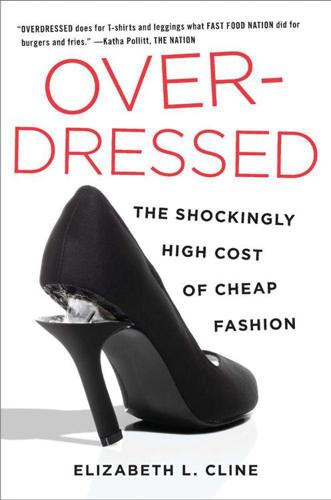
Overdressed: The Shockingly High Cost of Cheap Fashion
by
Elizabeth L. Cline
Published 13 Jun 2012
The pace of fashion is also making quality and craftsmanship obsolete. A 2006 report on fast fashion by researchers at the UK’s Manchester Metropolitan University found that fast-fashion companies are indeed eliminating product development and quality control. The researchers interviewed one fast-fashion designer anonymously, who admitted: “We sometimes have huge quality issues with garments that have maybe skipped a test or fit session to get into the shops quicker as the lead times we have been given are very tight.”32 There is evidence that some overseas factories prefer working with fast-fashion retailers precisely because they send things into production with little testing or fitting.
…
Whitaker, Service and Style, 70. 37. Todd, “Le Cheap, C’est Chic.” Chapter 4: Fast Fashion 1. Rachel Dodes, “Penney Weaves New Fast-Fashion Line,” Wall Street Journal, August 11, 2010. 2. Rana Foroohar, “A New Fashion Frontier: The Arrival of Fast Fashion European Giants Is Starting to Shake up the American Retail Scene,” Newsweek, March 20, 2006. 3. Ibid. 4. Nancy M. Funk, “Retailers Keep Fingers Crossed On Leaner Holiday Inventories,” The Morning Call, December 18, 1988. 5. Stryker McGuire with Anna Kuchment, Mar Roman, Leila Moseley, and Dana Thomas, “Fast Fashion,” Newsweek, September 17, 2001. 6. Stephanie Strom, “U.S.
…
“If you only deliver four times a year, there’s only a reason to come to the store four times a year,” lamented Ullman to the Wall Street Journal.1 The natural pace of clothing consumption in the United States was suddenly being viewed as retail suicide. There was only one thing that could save Penney’s: fast fashion. Ullman concluded, “Fast fashion for the young, modern woman is our highest-potential business opportunity.” In 2010 JCPenney rolled out a collaboration with the Spanish fast-fashion giant Mango. Although it only has a modest fourteen retail locations in the United States, Mango is one of the largest and most popular retailers in Europe and operates two thousand stores in 103 countries.
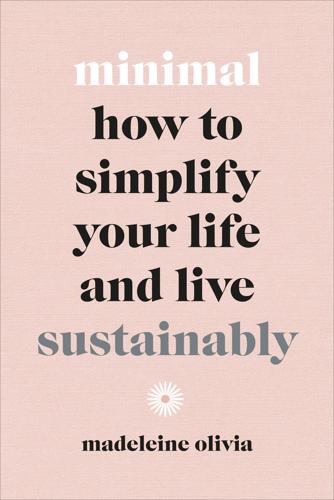
Minimal: How to Simplify Your Life and Live Sustainably
by
Madeleine Olivia
Published 9 Jan 2020
It isn’t always possible to only buy from completely ethical and sustainable companies, and all of us have fast fashion in our wardrobes, and products from unethical companies in our homes. But when and where you can, refuse companies that aren’t doing well enough. Later in the book I will discuss in more detail about how you can say no to fast fashion, animal products and toxic chemicals. Reduce If you can’t refuse, then reduce. Being smart about your purchases, making sure that you need them and that they’ll last a long time, saves so many items from ending up in landfill. If refusal isn’t an option, then reduction is the next best thing. This goes for anything from fast fashion to animal products to plastic-wrapped food.
…
Plastic (Ebury Press, 2018) p.57 9 United Nations, ‘SAVE FOOD: Global Initiative on Food Loss and Waste Reduction’, www.fao.org/save-food/resources, 2019 10 Rebecca Smithers, ‘UK throwing away £13bn of food each year, latest figures show’, www.theguardian.com, 10 January 2017 11 Pasty Perry, ‘The environment costs of fast fashion’, www.independent.co.uk, 8 January 2018 12 Roger Harrabin, ‘Fast fashion is harming the planet, MPs say’, www.bbc.co.uk/news, 5 October 2018 13 ibid 14 Nadia Khomami, ‘Burberry destroys £28m of stock to guard against counterfeits’, www.theguardian.com, 19 July 2018 15 Roger Harrabin, ‘Fast fashion is harming the planet, MPs say’, www.bbc.co.uk/news, 5 October 2018 16 Tansy Hoskins, ‘Is the fur trade sustainable?’, www.theguardian.com, 29 October 2013 17 U.S.
…
(what impact has this had on my life, those around me and potentially the environment?) * * * What three ways do I want to further reduce my waste in the future, and what impact will this have? three * * * wardrobe and fashion Fast Fashion If you’re reading this book opposite a wardrobe brimming with clothes from fast-fashion outlets, or you’re waiting on an order from one of them to be delivered to your door this week, then don’t worry, I’ve been there. I used to live for recreating the looks I’d seen in Vogue and Elle with cheaper alternatives. Part of it was artistic expression and a bit of fun, but the other side was the pressure to be relevant and beautiful.
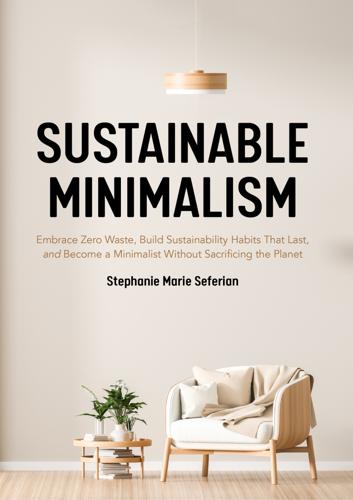
Sustainable Minimalism: Embrace Zero Waste, Build Sustainability Habits That Last, and Become a Minimalist Without Sacrificing the Planet (Green Housecleaning, Zero Waste Living)
by
Stephanie Marie Seferian
Published 19 Jan 2021
I naturally adopted a slow fashion mindset that emphasized classic silhouettes, natural fibers, and quality craftsmanship. Fast Fashion versus Slow Fashion There are fundamental differences between fast fashion and slow fashion, and understanding the distinctions between the two greatly simplifies the decluttering process. While wearers of fast fashion tend to view clothing as a disposable commodity, adopters of a slow fashion mindset treat garments as investments to be worn for years and years. While wearers of fast fashion tend to view clothing as a disposable commodity, adopters of a slow fashion mindset treat garments as investments to be worn for years and years. Because fast fashion is defined by inexpensive price tags, cheap fabrics, and ultra-trendy silhouettes destined to go out of style by next season, the industry makes its profit from the constant turnover of product and contributes to textile waste and microfiber pollution.
…
Common Concerns and How to Overcome Them “My closet has a lot of fast fashion pieces, and now I feel guilty. What should I do with them all?” Provided the items still fit and you still like them, wear them over and over again. The most eco-friendly action is to wear what you already have. “Is it ever ethical to buy fast fashion?” Ethical fashion can be pricey. But as we’ve discussed, fast fashion can be even more so when you think about CPW. If your financial means enable you to support ethical and sustainable retailers, forego fast fashion altogether. If, however, financial or other limitations prevent you from supporting ethical companies, consider thrifting quality pieces instead of buying fast fashion that’s new.
…
But I wasn’t teaching anymore, and business casual attire was laughably impractical for my new life as a stay-at-home mom. There were other clothes I never wore for different reasons: jeans that fit before I had children, shirts that heightened self-consciousness, and garments I received as gifts, but never liked and therefore never wore. I also spied a lot of fast fashion which, although once trendy, had already gone out of style. And because these fast fashion pieces were inexpensive, they looked drab and worn as they hung on their hangers. Getting dressed was stress-inducing. On the days I stayed home, I cloaked myself in a dingy sweatshirt and yoga pants. On the rare occasions I went out, I tossed everything on my bed, crossed my fingers, and tried everything on until I found a single outfit that worked.

We Are All Fast-Food Workers Now: The Global Uprising Against Poverty Wages
by
Annelise Orleck
Published 27 Feb 2018
It offers foreign companies tax abatements, marketing funds, and freedom from labor, safety, and environmental regulations.7 Since the late 1990s, garment manufacturers have flocked to these zones, using them to fill European and American stores with clothing that seems to drop in price every year. Besides Walmart, Gap, JC Penney, and Kohl’s, fast fashion has made new titans. The Spanish company Inditex (owners of Zara) became the world’s largest clothing retailer by pioneering fast-fashion production techniques. The Swedish company H&M became the world’s second-largest retail clothing chain and the largest producer of clothing in Bangladesh and Cambodia. And Gap, the world’s third-largest chain, drove its explosive growth by producing heavily in Asia.8 The flood of low-cost clothing from China, Bangladesh, Cambodia, and elsewhere has generated incredible profits.
…
Worker dormitories line the alleyways of the Mariveles and Cavite Export Processing Zones—semi-hidden, overcrowded, without light, privacy, and, often, even indoor plumbing. The air in these zones is thick with fumes from factories owned by Japanese, Korean, Chinese, and Philippine corporations. The Spanish fast-fashion giant Inditex has factories here too. But most of the clothing made here is for American companies, says garment union organizer Asuncion Binos. High-end fashion is produced in the same ways as fast fashion. Ann Taylor and Ralph Lauren, JC Penney and Gap are all here. The women workers sit at their sewing machines inside industrial zones patrolled by private armies. “Organizing in Cavite Export Processing Zone, you see much harassment,” Binos says.
…
Michelle Chen, “Congress Has Only Now Banned Slave Labor in U.S. Imports,” Nation, February 23, 2016; Matea Gold et al., “Ivanka Inc.,” Washington Post, July 14, 2017. CHAPTER 22—HOW THE RAG TRADE WENT GLOBAL 1. Messenger Band, “Suffer from Privatization” (2009). 2. Ibid. 3. Glynis Sweeny, “Fast Fashion Is the Second Dirtiest Industry on Earth,” EcoWatch, August 17, 2015, http://www.ecowatch.com/fast-fashion-is-the-second-dirtiest-industry-in-the-world-next-to-big-1882083445.html. 4. Lina Stoz and Gillian Kane, “Facts on the Global Garment Industry,” February 2015, https://cleanclothes.org/resources/publications/factsheets/general-factsheet-garment-industry-february-2015.pdf. 5.
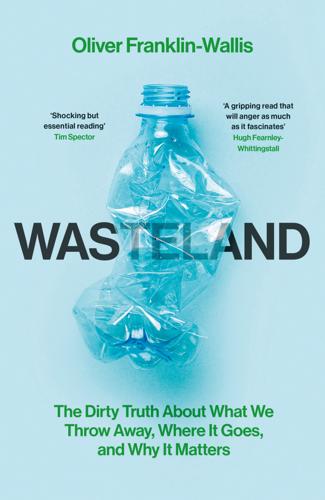
Wasteland: The Dirty Truth About What We Throw Away, Where It Goes, and Why It Matters
by
Oliver Franklin-Wallis
Published 21 Jun 2023
Where once major clothing labels had four seasons per year, many fast-fashion brands can now run new ‘drops’ of capsule collections every day, year-round, enabled by underpaid labour in countries like Bangladesh and cheap Chinese cotton. Shen Lu, a professor at the University of Delaware who studies the fast-fashion industry, has found that H&M can add about 25,000 new products to its website in a single year, Zara 35,000. In the same time period the Chinese fast-fashion giant SHEIN – which in just a few years has gone from virtually nonexistent to comprising 28 per cent of the US fast-fashion market – added 1.3 million different new products.16 It’s hard not to think of Scott’s ‘Paper Caper’, the paper dress marketed during the 1950s, at the height of the throwaway society.
…
‘We believe we have two years before one of a few scenarios happens: one is that Kantamanto is bulldozed. Two is that there’s a ban in place for the second-hand clothing trade here. Three is that the fast-fashion industry sets up manufacturing here, which is likely to happen within the next year. And so you either have Kantamanto not existing, and therefore the complete loss of this model of reuse, or clothing made in Ghana by fast-fashion brands that probably went around the world within six months and ended up back here.’ The challenge for NGOs in such situations is: do you attempt to oppose the industry from the outside and force change, or do you ultimately join it, and hope to effect change from within?
…
‘Kantamanto fire outbreak: We’re not surprised our market was set ablaze – traders claim’, GhanaWeb, 16/12/2020: https://www.ghanaweb.com/GhanaHomePage/NewsArchive/Kantamanto-fire-outbreak-We-re-not-surprised-our-market-was-set-ablaze-Traders-claim-1135100 30 Madeleine Cobbing, Sodfa Daaji et al., ‘Poisoned Gifts’, Greenpeace (2022): https://www.greenpeace.org/static/planet4-international-stateless/2022/04/9f50d3de-greenpeace-germany-poisoned-fast-fashion-briefing-factsheet-april-2022.pdf 31 Ellen MacArthur Foundation, A New Textiles Economy. 32 Lucianne Tonti, ‘How green are your leggings? Recycled polyester is not a silver bullet (yet)’, The Guardian, 21/03/2021: https://www.theguardian.com/fashion/2021/mar/22/how-green-are-your-leggings-recycled-polyester-is-not-a-silver-bullet-yet 33 ‘thredUp 2022 Resale Report’, thredUp (2022): https://www.thredup.com/resale/static/2022-resaleReport-full-92a77020598ceca50f43227326100cc2.pdf 34 ‘Chile’s desert dumping ground for fast fashion leftovers’, Al Jazeera, 08/11/2021: https://www.aljazeera.com/gallery/2021/11/8/chiles-desert-dumping-ground-for-fast-fashion-leftovers 6.
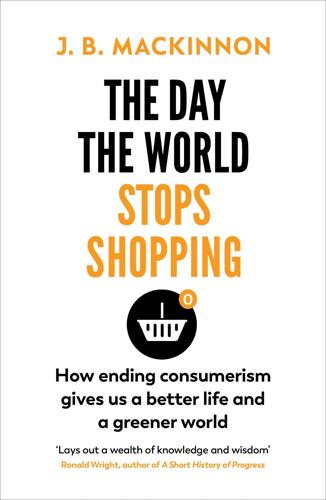
The Day the World Stops Shopping
by
J. B. MacKinnon
Published 14 May 2021
“How quickly can the mill get it to the people they’re procuring cotton from? And those cotton people are getting the cotton from a field somewhere. The field is going to be the last to know, and it was probably already planted, right?” Ironically, the fast-fashion clothiers that constantly spin out cheap new styles would respond more nimbly than traditional firms. Some fast-fashion labels can design a garment, manufacture it and put it on sale in a matter of weeks; they can stop the cycle just as quickly. For slower-churn companies like Levi’s, it would be months before existing orders are completed and loaded onto cargo ships in mega-ports like Singapore and Shanghai.
…
Lamps that barely hold their bulbs, barstools standing on shaky legs, beds that creak and fail. How long could we make them last? Could we finally love them? The first symbol of a wabi-sabi future might not be a charming tote bag that has replaced our plastic bags, but a plastic bag that has been patched so it can last a little longer. 12. Fast Fashion Cannot Rule But It May Not Have to Die Fast fashion is the opposite of a world in which we buy better but less. It is the utmost example of selling more and worse. That there was something we could call fashion, and that it changed over time and you ought to keep up with it, is dated by historians at least as far back as the 1300s.
…
There’s enough that deconsumer culture might still be able to offer a little fast fashion—something bright and clever, something constantly changing and then recycled, to add flair to our durable pants and classic jackets. “It would enable that, for those that want to live that path,” said Rhoades. “We’re not all going to be shopping the same.” The real threat to the promise of a circular economy is, once again, the sheer scale of consumption. Could the circular economy provide an adequate wardrobe for all of the world’s nearly 8 billion people? Rhoades thinks it could. Could it supply us all with the fast-fashion lifestyle of the world’s richest consumers?
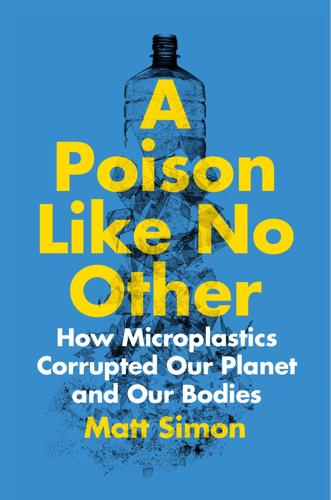
A Poison Like No Other: How Microplastics Corrupted Our Planet and Our Bodies
by
Matt Simon
Published 24 Jun 2022
New York: Ig Publishing. REI. 2022. “What Is Organically Grown Cotton?” https://www.rei .com/learn/expert-advice/organically-grown-cotton.html. Al Jazeera. 2021. “Chile’s Desert Dumping Ground for Fast Fashion Leftovers.” https://www.aljazeera.com/gallery/2021/11/8/chiles-desert -dumping-ground-for-fast-fashion-leftovers. Besser, Linton. 2021. “Dead White Man’s Clothes.” Foreign Correspondent. https://www.abc.net.au/news/2021-08-12/fast-fashion-turning -parts-ghana-into-toxic-landfill/100358702. McCormick, Erin, Bennett Murray, Carmela Fonbuena, Leonie Kijewski, Gökçe Saraçoğlu, Jamie Fullerton, Alastair Gee, and Charlotte Simmonds. 2019.
…
Between 1950 and 2010, the production of synthetic fibers exploded from 4.6 billion pounds to 110 billion pounds a year. Two out of three pieces of clothing are now made of plastic, textiles like polyester, nylon, and fleece.63 This coincides with the rise of fast fashion, crappy clothes that quickly wear out and disintegrate, shedding fibers at a rapid clip. More than half of all fast fashion is disposed of within a year, according to one estimate,64 and a garbage truck full of textiles is now landfilled or incinerated every second.65 It’s a vicious circle: synthetic clothing keeps humans warm on the cheap, and as more people rise into the middle class, they demand bigger wardrobes—total annual clothing sales are expected to triple by 2050.
…
The fashion industry pioneered the economics of obsolescence in the mid-20th century—the easiest way to sell more clothes is to force them out of style, making them embarrassing to wear a short while after buying the things, only for them to come back in style a few decades later, when people buy the same clothes they once threw out.9 That very profitable innovation has since spread across the consumerist economy, from phones to cars to home decor, producing heaps of wasted, uncool goods. Fast fashion sprinkles in yet more obsolescence by flooding the market with cheap clothes you have to replace long before they go out of style: if your sweatshirt is falling apart after a few weeks, you’ve already flushed a good portion of it away as microfibers. But keep in mind that natural fibers these days are soaked in additives, so they’re not a perfect alternative. Even organic cotton just means it was grown without synthetic chemicals—it was still dyed and potentially further treated to be tougher and waterproof.10 Whatever the material, fast fashion is garbage, literally: 86 million pounds of discarded clothing piles up each year in dumps in Chile’s Atacama Desert, where wind and UV bombardment t u r n i n g d o w n t h e p l a s t i c ta p slough off microfibers to blow around the landscape and into the atmosphere.11 Over in Accra, the capital of Ghana, 40 percent of the 15 million used garments that arrive every week are too busted to resell, so they meet the same fate.12 As a consumer, the most impactful thing you can do is buy better clothes and wear them for years—good fashion instincts be damned— since experiments have shown that textiles emit fewer and fewer microfibers over time.
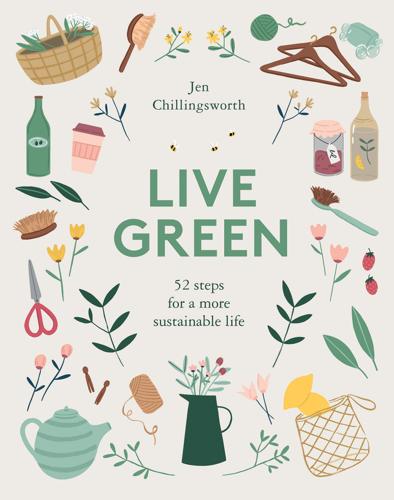
Live Green: 52 Steps for a More Sustainable Life
by
Jen Chillingsworth
Published 19 Feb 2019
These synthetic fibres have also been found to shed tiny particles every time they are washed, releasing millions of microplastics into the water supply. Billions of pieces of clothing are produced each year and are designed, created and sold to consumers as quickly as possible and at low prices. Traditionally there used to be two fashion collections a year; now, due to the fast fashion industry, there are 50 cycles of new collections released every year. Consumption of fast fashion is rising rapidly while the length of time an item is kept and the number of times it is worn are dramatically falling. Brands have also been left with huge quantities of unsold stock, contributing even more to landfill. It’s easy to get fooled into buying more cheap clothes.
…
Mindful shopping I was once a terrible hoarder of fast fashion. I’d buy and buy, adding to the mountain of clothes that didn’t fit in my closet or chest of drawers. Yet I still believed I had nothing to wear. Now I’m more mindful about what I choose to buy and I only shop for what I genuinely need. I’ve realized over the years that personal style isn’t about wearing all the latest trends or copying a celebrity – it’s about dressing in clothes that make me happy, that feel great and I can wear repeatedly without tiring of them. Reducing your consumption of fast fashion can be tricky as it’s a way many of us fill time, relieve boredom or to cheer ourselves up.
…
Buy less, buy better It’s great to reduce your consumption of fast fashion and prioritize quality over quantity. I like to buy clothes that make me feel great, that fit my lifestyle and work with everything else in my wardrobe. I care about who makes my clothes and whether a company has a sound ethical policy regarding their staff and the environment. I also want something that is made to last. Often these items cost a little more and I’m not going to lie and say that hasn’t sometimes put me off buying them. Yet the key is to think about how much an item costs whilst weighing up how often you wear it. I’ve bought cheap jeans from a fast-fashion chain and I’ve bought more expensive organic cotton jeans.

A Life Less Throwaway: The Lost Art of Buying for Life
by
Tara Button
Published 8 Feb 2018
These two exercises should help you do the same. Next we’ll dig deeper, so you can find the clothes that truly suit you and discover how to resist the pressures exerted by trends and fast fashion. 7 Faster and Faster Fashion or How to get off the trend treadmill ‘Fashion – a field of ugliness so absolutely unbearable that we have to alter it every six months.’ Oscar Wilde We used to have two fashion seasons a year, but now, thanks to fast fashion, we are offered new styles on a weekly basis. The reality of our situation might be summed up by the fact that it’s considered newsworthy when a celebrity is seen wearing the same dress twice.
…
She’s fully aware that she’s buying clothing and shoes that aren’t meant to last long, but in her mind their cheap price means this is fine. In the end the haul is about forty items, ranging between £2 and £13 each. This is fast fashion at its most seductive. And it’s not just vloggers who go binge shopping. On average we buy 60 per cent more than we did fifteen years ago and we keep our clothes for half as long.8 This change may have been cheap for us, but it’s costing other people dearly. In 2015 a Norwegian documentary showed what happened when three fashion-mad teenagers went to Cambodia to experience the reality behind the fast-fashion clothing they loved.9 The three young Norwegians stayed with a 25-year-old garment worker called Sokty.
…
Longevity wasn’t one of my criteria, so I owned temporary things, poorly thought-through and soon-regretted clothes or hobby and fitness equipment bought in fits of short-lived enthusiasm. My habitual impulse buying eventually caused credit card debts of thousands of pounds, leaving me feeling out of control, childish and angry with myself. I would come home to a chronically cluttered house, which was exhausting to tidy or clean, and stare blankly at my piles of fast-fashion clothes, wondering why I felt I had nothing to wear. Like many people, I was stumbling through life believing that ‘when this happens or when I have that, then I’ll be happy’. Without a clear sense of self, I’d unconsciously mould my character into whatever I thought my partners wanted me to be.
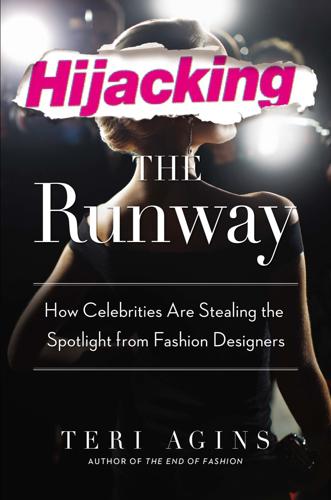
Hijacking the Runway: How Celebrities Are Stealing the Spotlight From Fashion Designers
by
Teri Agins
Published 8 Oct 2014
More than commerce was at stake. The aggrieved believed they were striking in defense of artistry, creativity, and connoisseurship, which continued to erode in the wake of fast-fashion and celebrity-fashion brands that had been threatening traditional designers since the dawn of the twenty-first century. The celebrity designers were now at the bottom of the fashion hierarchy, reviled by purists even more than fast-fashion knockoff artists, because celebrities were phonies who had brazenly hoodwinked consumers—taking all of the credit for work they had little or nothing to do with. At least that was the tenor of the bitching coming from the purists.
…
There’s a full-page picture of Dancing with the Stars two-time champ and professional ballroom dancer Julianne Hough in skinny jeans, a leather cargo jacket, a white lace blouse, and flat boots. Those mass-market Dress-Down Nation clothes are a big part of People StyleWatch coverage: Cheap 1990s basics morphed into cheap, contemporary fashion merchandise produced in the twenty-first century by fast-fashion specialists Zara, H&M, Forever 21, and Uniqlo, who use state-of-the art technology and global sourcing to inexpensively turn out trendy, embellished dresses, jumpsuit rompers, faux-leather skirts, and denim jackets—meant to be worn for a season and then thrown out. Just what the fashion industry loves.
…
Celebrity scents were novelties that pulled shoppers into department stores, where they might buy lipstick and foundation, a new top, shoes, or a party dress. They reached a hard-to-engage demographic, young people between eighteen and thirty, who increasingly had been bypassing the cosmetics counters at chains like Macy’s, Bloomie’s, or Nordstrom altogether in favor of fast-fashion purveyors like H&M, Forever 21, and Zara. The momentum from J.Lo fragrances helped give Lopez second and third chances in the apparel business. In 2011, she finally hit pay dirt when she rebounded with a new Jennifer Lopez fashion collection aimed at women over thirty, including the underserved large-size market, launched exclusively at the 1,100-store Kohl’s chain.
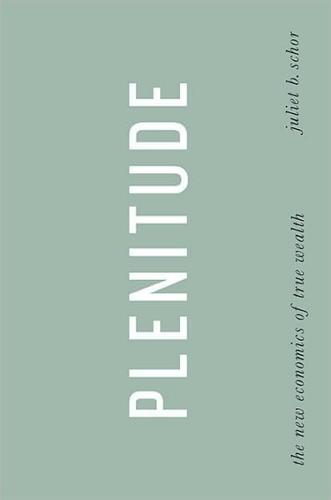
Plenitude: The New Economics of True Wealth
by
Juliet B. Schor
Published 12 May 2010
We devalue the material world by excessive acquisition and discard of products. The plenitude principle of true materialism reverses this attitude. Of course, it’s not only the planet that suffers in this stage of consumer culture. The fast-fashion dynamic puts enormous pressure on consumers to keep up with what can at times feel like a dizzying acceleration in norms. It’s financially exhausting, and requires time to shop, compare prices, and learn to operate new technologies. Fast fashion fosters an unhealthy dissatisfaction with what one has and anxiety about falling behind. Among the comfortable, it can engender a lack of contentment and gratitude. The materiality paradox hasn’t been recognized, and especially not by scholars of consumption in the wealthy countries.
…
It’s parsimonious in the use of scarce natural resources and a heavy user of what can be comparatively in surplus—time, knowledge, technology, and, as we reconstruct it, community. Plan of the Book In the chapters that follow, I explore these issues in more detail. Chapter 2, “From Consumer Boom to Ecological Bust,” is the story of a rapidly expanding consumer economy and its ecological legacies. This chapter describes the emergence of a fast-fashion dynamic across the consumer market, whereby the acquisition and discard of goods accelerated. I chart a tsunami of sofas, toasters, T-shirts, and other items, as well as the mountains of discards that came in the wake of all this purchasing. Scientists and engineers have argued since the 1970s that economic growth was the core of the ecological problem.
…
To see the folly in the “spend our way back to normal” route, we need to look at what was happening before the crash and how it has affected ecosystems and natural resources. Clothing is a good place to start, not because it’s the most ecologically significant of the things we consume (it is not), but because it was the cutting edge of a set of unsustainable consumer practices. Fast Fashion: The Case of Apparel The most revealing fact about the contemporary apparel market is this: clothing can now be purchased by weight, rather than by the piece, and at a price as low as a dollar a pound. That means it’s possible to buy gently used, even high-end apparel for less than rice, beans, or other basic foodstuffs.
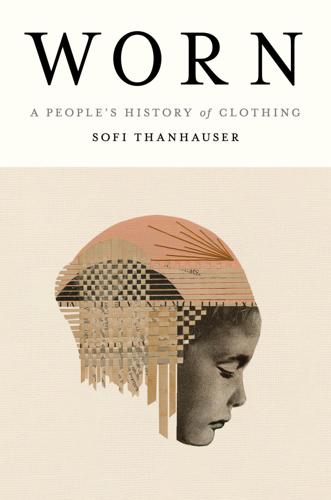
Worn: A People's History of Clothing
by
Sofi Thanhauser
Published 25 Jan 2022
By 2017, one garbage truck of clothes (5,787 pounds) was burned or sent to landfills every second. Alarm bells have been ringing about fast fashion’s evils: its toxicity and exploitativeness. These aren’t new problems. What is new is their scale. Textile and garment work have been dangerous to laborers since industrialization, but three of the four deadliest garment factory disasters in history occurred during the 2010s. Textile making has been damaging the environment for centuries, but today the industry produces a full fifth of global wastewater, and emits one tenth of global carbon emissions. “Fast fashion” didn’t spring from a void in the 1990s, the decade during which this term came into circulation.
…
Garments made from microfibers are increasingly sold by fast fashion retailers like Zara, Forever 21, and H&M—retailers that found a way around the dwindling fortune of the department store by producing both more and increasingly faster changes to their offerings. Traditionally, department stores had an average of approximately three “turns” or seasonal deliveries of merchandise a year. In 2000, retailers were getting deliveries up to once a month, which then seemed an outlandish pace. Today, that pace is quaint. In 2010, JCPenney joined the fast fashion model, partnering with Italian company Mango, which is capable of moving new styles from design studio to store in a month.
…
* * * — The same forces that had driven the rise of the industrial fabric trade at its point of origin: willingness to exploit women, willingness to exploit nature, and colonial violence, had reasserted themselves with a vengeance to build the global garment trade of the twenty-first century. It is a fearsome beast. But it isn’t all-powerful. The capital-intensive synthetics industry, like the fast fashion system with which it is entwined, must metastasize in order to survive. That fact makes it voracious, but it also makes it weak. Meanwhile, even as the fast fashion system has been hurtling toward achieving its grotesque proportions, another kind of production has been quietly taking hold, driven by people interested in creating more intelligent, humane ways of working. They work with many materials, although there is one fiber that has generated a particular passion among them.

Making It in America: The Almost Impossible Quest to Manufacture in the U.S.A. (And How It Got That Way)
by
Rachel Slade
Published 9 Jan 2024
Ben’s union connections from his AFL days represented workers in physically demanding industries, so Ben and Whitney wanted to create a hoodie unlike any other in the market—solid, like the post–World War II vacuum cleaners that rolled out of factories originally set up to make B-29 bombers. Those 1950s appliances were built for battle, weighed five times as much as they needed to, and would probably still work if you oiled them up and plugged them in. The American Roots hoodie would be the apparel equivalent, the antithesis of the flimsy, disposable, fast fashion garb that Americans had grown accustomed to. But first, they needed domestically sourced cotton fleece, drawstrings, zippers, and grommets. Was anyone making this stuff anymore? The answer was yes, but they had to look pretty hard to find them. The Waxmans bought their thread from a 125-year-old manufacturer based in North Carolina that has operations around the globe.
…
The machines had plenty of moving parts that sometimes needed to be tweaked or replaced, which meant Ben and Whitney would have to depend on a repair person to keep their operation going. The pièce de résistance of the American Roots hoodie design was, of course, its hood, which bore little resemblance to the fast fashion hood—often just a single piece of folded fleece, the result being an amorphous appendage more akin to a slouchy head-pocket agnostic about staying in place. Instead, the American Roots hood would be tailored to wrap the head in warmth like a parka, without slipping down over your eyes; it would have so much weight and structure that when you flipped it up, it remained there, even in a strong wind.
…
In 2020, their biggest year to date, they invested $366,000 in training. Evan Sullivan, twenty-nine, thought he might have another answer. He was a clever, clear-eyed millennial who’d arrived at American Roots in 2020 with idealism in his heart and a knack for creating systems in his soul. Evan was a different kind of refugee—a victim of the fast fashion industry. The Maine native had graduated in 2013 from Massachusetts College of Art and Design, the only publicly funded art school left in the country, founded by Massachusetts’s textile and mercantile titans in the 1860s along with MIT and the Museum of Fine Arts. When he saw a help wanted ad in 2015 for a designer for American Roots, he applied.

The Raging 2020s: Companies, Countries, People - and the Fight for Our Future
by
Alec Ross
Published 13 Sep 2021
seven hundred thousand square miles of land: Aristos Georgiou, “The Sea Is Rising at Such a Catastrophic Rate That We Could Lose 700,000 Square Miles of Land, Displacing 187 Million People,” Newsweek, May 21, 2019, https://www.newsweek.com/sea-rising-700000-land-187-million-people-displaced-1431411. fashion is responsible for 10 percent: “Putting the Brakes on Fast Fashion,” United Nations Environment Programme, November 12, 2018, https://www.unenvironment.org/news-and-stories/story/putting-brakes-fast-fashion. It was the first “B Corp”: “B Lab,” Patagonia, accessed June 3, 2020, https://www.patagonia.com/b-lab.html. eBay actually sued him: eBay Domestic Holdings, Inc. v. Newmark et al., Civil Action No. 3705-CC (Del. Ch. Sept. 9, 2010).
…
That changed in 2019: Anaïs Lerévérend, “Icicle to Open in Paris Its First Flagship Outside China,” Fashion Network, April 19, 2019, https://ww.fashionnetwork.com/news/Icicle-to-open-in-paris-its-first-flagship-outside-china,1091104.html. According to a January 2020 report: Nathalie Remy, Eveline Speelman, and Steven Swartz, “Style That’s Sustainable: A New Fast-Fashion Formula,” McKinsey & Company, October 20, 2016, https://www.mckinsey.com/business-functions/sustainability/our-insights/style-thats-sustainable-a-new-fast-fashion-formula. A 2017 study on consumer trends: Ruonan Zheng, “How These Consumer Trends Will Affect Luxury Brands in China in 2018,” Jing Daily, November 1, 2017, https://jingdaily.com/consumer-trends-affect-luxury-brands-china-in-2018-mintel-report/.
…
We had employees who were committed to this and they were willing to do the next thing because they had this cultural confidence that you could pull this off.” As of June 2020, Patagonia was still the only major apparel company that relied exclusively on organic cotton. Over the last decade, the company has made it a mission to fight against “fast fashion,” a practice of quickly translating every season and every moment’s movement in high fashion to mass production. On Black Friday in 2011, Patagonia took out a full-page ad in the New York Times that alerted consumers to the environmental impact of its clothes and called on them to think twice before buying something they did not need.

Simple Matters: Living With Less and Ending Up With More
by
Erin Boyle
Published 12 Jan 2016
Purchased to fill a decorative void, the object has limited sentimentality, which no doubt will impact the likelihood that it sticks around, or brings you joy, or does much of anything but collect dust. Probably most important of all, much of this kind of decoration is not sustainably made. To keep price points down, stores mass-produce things like picture frames and vases and other bits that are easy to believe you need to buy every season. Like the fast-fashion clothing epidemic, there seems to be a similar schedule of big-box decorations being churned out in a manner that makes you feel as though your decorating choice is outdated nearly as soon as you bring it through the front door. My own approach has been to add decorative pieces slowly, over time.
…
We can blame ourselves for bad habits, but we can also blame a clothing industry that has increasingly shifted gears in an effort to produce a constant, never-ending stream of new clothes—cheaply. In the scheme of things, this is a fairly new phenomenon. Historically, fashion labels produced just two main collections—spring/summer and fall/winter—and major department stores had just four main selling seasons. But as department stores have been replaced by enormous fast-fashion chains, the choices on offer are constantly turning over. In her book Overdressed, Elizabeth Cline writes, “To an increasing degree, the look on display in clothing stores is rapidly changing. What’s in stores this week is no longer what will be there the next week. What’s in style now is different from what will be in style next year.”1 And the result is that many people are constantly shopping.
…
If yes, was it one that I loved unconditionally but that I still managed to ruin? If yes, is it worth replacing? I try hard not to rush out to replace what I’ve given away. Getting comfortable with owning fewer clothes makes keeping an edited wardrobe possible in the first place. Lest I oversimplify the task of donating unwanted clothes, I should also note that our fast-fashion problem has resulted in a thrift-store problem. Ten or fifteen years ago, browsing thrift stores meant a likelihood of taking home a real score: the perfect wool blazer, a pair of vintage leather boots, a few cotton ringer tees with charming small-town sports team insignias. Today, thrift stores are being weighed down by the detritus of bad choices.
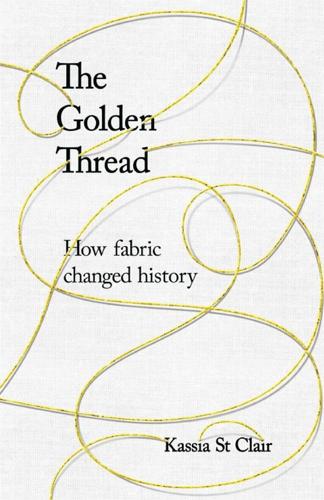
The Golden Thread: How Fabric Changed History
by
Kassia St Clair
Published 3 Oct 2018
A., ‘The Origins of Swadeshi (Home Industry)’, in Material Culture: Critical Concepts in the Social Sciences (London: Routledge, 2004), II, 56–88 Beckert, Sven, ‘Empire of Cotton’, The Atlantic, 12 December 2014 <https://www.theatlantic.com/business/archive/2014/12/empire-of-cotton/383660/> ———, Empire of Cotton: A Global History (New York: Vintage Books, 2014) Bedat, Maxine, and Shank, Michael, ‘There Is A Major Climate Issue Hiding In Your Closet: Fast Fashion’, Fast Company, 2016 <https://www.fastcompany.com/3065532/there-is-a-major-climate-issue-hiding-in-your-closet-fast-fashion> [accessed 5 October 2017] Bender Jørgensen, Lise, ‘The Introduction of Sails to Scandinavia: Raw Materials, Labour and Land’, in N-TAG TEN: Proceedings of the 10th Nordic TAG Conference at Stiklestad, Norway, 2009 (Oxford: Archaeopress, 2012), pp. 173–81 Benns, Whitney, ‘American Slavery, Reinvented’, The Atlantic, 21 September 2015 <https://www.theatlantic.com/business/archive/2015/09/prison-labor-in-america/406177/> Berkin, Carol, Miller, Christopher, Cherny, Robert and Gormly, James, Making America: A History of the United States, 5th edn (Boston: Houghton Mifflin, 2008), i Bilefsky, Dan, ‘ISIS Destroys Part of Roman Theater in Palmyra, Syria’, New York Times, 20 January 2017, section Middle East, p. 6 Birkeboek Olesen, Bodil, ‘How Blue Jeans Went Green: The Materiality of An American Icon’, in Global Denim, ed. by Daniel Miller and Sophie Woodward (Oxford: Berg, 2011), pp. 69–85 Blanc, Paul David, Fake Silk: The Lethal History of Viscose Rayon (New Haven: Yale University Press, 2016) Blanchard, Lara C.
…
, Live Science, 2016 <https://www.livescience.com/56786-vikings-raided-to-find-love.html> [accessed 18 October 2017] Christesen, P., ‘Athletics and Social Order in Sparta in the Classical Period’, Classical Antiquity, 31 (2012), 193–255 <https://doi.org/10.1525/ca.2012.31.2.193> Christian, David, ‘Silk Roads or Steppe Roads? The Silk Roads in World History’, Journal of World History, 11 (2000), 1–26 Christian, Scott, ‘Fast Fashion Is Absolutely Destroying the Planet’, Esquire, 14 November 2016 <http://www.esquire.com/style/news/a50655/fast-fashion-environment/> [accessed 5 October 2017] ‘Cistercians in the British Isles’, Catholic Encyclopedia <http://www.newadvent.org/cathen/16025b.htm> [accessed 19 May 2017] Clarey, Christopher, ‘Vantage Point: New Body Suit Is Swimming Revolution’, New York Times, 18 March 2000, section Sports <https://www.nytimes.com/2000/03/18/sports/vantage-point-new-body-suit-is-swimming-revolution.html> [accessed 16 December 2017] Clark, Charlotte R., ‘Egyptian Weaving in 2000 BC’, The Metropolitan Museum of Art Bulletin, 3 (1944), 24–9 <https://doi.org/10.2307/3257238> Clarke, Dave, interview at London Zoo, 2017 ‘Climbing Mount Everest is Work for Supermen’, New York Times, 18 March 1923, p. 151 ‘Clothing: Changing Styles and Methods’, Freeze Frame: Historic Polar Images <http://www.freezeframe.ac.uk/resources/clothing/4> [accessed 11 June 2017] ‘Clothing: What Happens When Clothing Fails’, Freeze Frame: Historic Polar Images <http://www.freezeframe.ac.uk/resources/clothing/3> [accessed 11 June 2017] Cloud, N.
…
When American soldiers liberated the factory and its workers at the end of the war, they were astonished by her energy: she immediately began helping them round up local Nazi officials who remained at large and set up soup kitchens for refugees. At the latter, she insisted that everyone be given a share, including German civilians. Fast Fashion; Old Problems This is a story of exploitation. Abir Abdullah, photographer based in Dhaka, 2015 At three minutes to nine on Wednesday morning, 24 April 2015, a large, eight-storey building collapsed as suddenly and completely as if its concrete components had been held together by nothing more substantial than silken threads.

Green Interior Design
by
Lori Dennis
Published 14 Aug 2020
Buying New Clothing Next, with any new additions to your wardrobe, consider adopting a conscious consumer strategy that ensures you’re also living green and sustainably when you are clothing shopping. The first major boom of online retailership gave us more access to fast fashion, an irresponsible way of manufacturing and selling clothing to mass markets at discounted prices, that comes at a pretty high cost to the environment and to the workers who make the clothing. “Buy less Choose well Make it last.” —Vivienne Westwood Of course, these fast-fashion retailers always existed, and the other thing the internet has been good about is influencing a backlash against fast fashion, with ample, affordable, transparent, sustainable clothing retailers like Everlane (www.everlane.com) and The Reformation (www.thereformation.com), to name a couple.
…
Donate or Trash Plan a clean-out day and be incredibly editorial—if you haven’t worn/used an article of clothing in a year, throw it out, or, better yet, donate it to someone who will give it a new home! If you’re throwing out a worn-out item, keep an inventory of what needs replacing. There are also places you can donate fabrics—not just clothing. In many cities, H&M will take any donated textiles and make sure they’re donated to the right places to be repurposed. How’s that for fast fashion trying to course correct? Sorting & Getting Organized Once you have your “keep pile” finalized, pick a method of organization: sort by type of clothing and color or by occasion and season, whatever best suits your lifestyle—but choose just one so you’re best able to keep track of everything you have.

The Climate Book: The Facts and the Solutions
by
Greta Thunberg
Published 14 Feb 2023
In 2021, I invited a great number of leading scientists and experts, and activists, authors and storytellers to contribute with their individual expertise. This book is the result of their work: a comprehensive collection of facts, stories, graphs and photographs showing some of the different faces of the sustainability crisis with a clear focus on climate and ecology. It covers everything from melting ice shelves to economics, from fast fashion to the loss of species, from pandemics to vanishing islands, from deforestation to the loss of fertile soils, from water shortages to Indigenous sovereignty, from future food production to carbon budgets – and it lays bare the actions of those responsible and the failures of those who should have already shared this information with the citizens of the world.
…
The gas-guzzlers’ share of the vehicle market has doubled in the past decade, for no other reason than consumer preference. (Family sizes are stable or shrinking and the share of workers in agricultural or industrial professions is falling in the relevant countries.) That shift has overwhelmed the beneficial effect of electric vehicles on energy consumption overall. Or take fast fashion. Garment makers are now producing 100 billion new garments a year, with the average person buying twice as many items of clothing as they were a generation ago. Much of that clothing is never worn, or is worn just a handful of times, and just 1 per cent of fabric is ultimately recycled, the Ellen MacArthur Foundation has found.
…
We cannot live sustainably within today’s economic system. Yet that is what we are constantly being told we can do. We can buy sustainable cars, travel on sustainable motorways powered by sustainable petroleum. We can eat sustainable meat and drink sustainable soft drinks out of sustainable plastic bottles. We can buy sustainable fast fashion and fly on sustainable aeroplanes using sustainable fuels. And of course we are going to meet our short- and long-term sustainable climate targets too, without making the slightest effort. ‘How?’ you might ask. How can that be possible when we don’t yet have any technical solutions that can fix this crisis alone and the option of stopping doing things is unacceptable from our current economic standpoint?

Dublin Like a Local
by
Dk Eyewitness
A river of ignited whiskey swept through the Liberties in 1875, when the Dublin Whiskey Fire caused barrels to burst in a nearby storehouse. g Contents SHOP Forget fast fashion and generic high street stores: Dubliners love nothing more than scouting vintage gems, celebrating local designers and indulging in organic produce. g Contents SHOP Vintage Gems Indie Boutiques Gourmet Treats Irish Design Book Nooks Take a Tour: An afternoon of crate digging g SHOP g Contents Vintage Gems Never ones to follow the crowd, thrifty Dubliners embrace decades-old vintage stores over fast fashion on the high street. The best stores lie in the city centre, and are the go-to stop for one-of-a-kind pieces.
…
g SHOP g Contents Indie Boutiques FRESH CUTS BOW & PEARL INDIGO & CLOTH OM DIVA COSTUME FOLKSTER SPACE OUT SISTER g Indie Boutiques g Contents Google Map FRESH CUTS Map 2; 13 Castle Market, Creative Quarter; ///humid.wins.looked; www.freshcutsclothing.com The move away from fast fashion brands in favour of smaller, ethical shops is something Dubliners feel passionately about – so much so that the success of this gem’s pop-up shop secured it a permanent store. Casual, minimal lifestyle attire keeps locals returning to stock up as the seasons change, while the brand’s own graphic tees, hats and hoodies attract those seeking more abstract items.
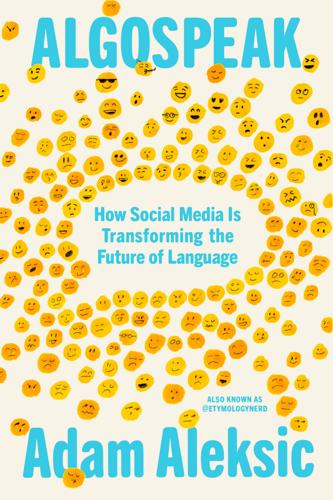
Algospeak: How Social Media Is Transforming the Future of Language
by
Adam Aleksic
Published 15 Jul 2025
Instead of just cottagecore content, an “aesthetic” creator can straddle the line between the head and the long tail by playing into whatever niche “-core” is trending in a particular moment (and there’s always one trending). These influencers may make a goblincore video one day, then an angelcore video the next; in fact, they’re often incentivized to. This is where fast fashion comes in. Starting with brands like Zara in the late twentieth century, retailers began shifting away from durable, high-quality clothing and toward a higher output of cheaper, trend-based, replaceable apparel. Today, online brands have done the same thing on an even faster scale. E-commerce websites like Temu and Shein produce flimsy, unethically sourced products at extremely low cost in response to every social media microtrend.
…
A quick search on TikTok reveals hundreds of videos showing off “Shein cottagecore hauls,” reinforcing the concept of a cottagecore identity and “cottagecore” as a word itself in a circular, self-perpetuating way. As soon as the short attention spans of social media shift to a new “-core” aesthetic, the fast-fashion retailers are ready to hop on the trend and sell products in that theme. Trends are good for them. The more trends, the more they can sell. The faster the trends happen, the faster they can sell.[4] In some cases, marketers even create trends. A curious example of this is how we’ve recently started labeling our summers.
…
How did the word shift so dramatically in meaning in such a short time span? It all has to do with how the label was captured and co-opted by more mainstream brands. Although “preppy” started in the catalogs of upscale retailers such as Ralph Lauren and Brooks Brothers, it soon began being offered by youth-targeted fast-fashion stores like Aeropostale and Hollister. These retailers marketed “preppy” at an affordable price to “basic” upper-middle-class girls, who turned the term into more of a buzzword of what they like to wear. Suddenly “preppy” was anything that was popular with the popular girls, and that typically meant bright pink clothing.
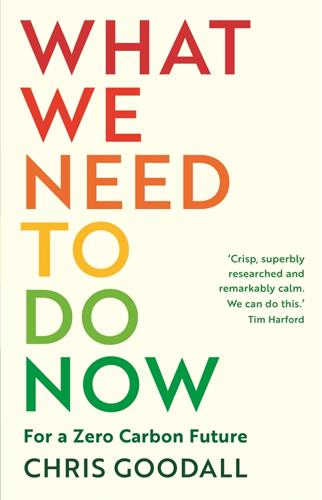
What We Need to Do Now: A Green Deal to Ensure a Habitable Earth
by
Chris Goodall
Published 30 Jan 2020
As consumers, we have many means to reduce the global impact of our clothes choices. The simplest is to buy fewer, higher-quality, clothes, designed for longevity. Many items we buy today are not designed or manufactured to withstand repeated wearings. The ‘fast fashion’ trend has been built on selling clothes to be worn on a few occasions before being thrown away. We cannot entirely blame the retailers for this wasteful and destructive feature of the modern high street. Fast fashion has developed because British shoppers are eager to buy impossibly cheap T-shirts and other disposable items. Moreover, one study showed that less than a fifth of clothes are disposed of because they are worn, stained, damaged or have lost shape.
…
They even hold workshops to help you make your own clothes. Businesses like this will be central to the development of the ‘circular economy’, as well as producing good-quality skilled employment for local people. ‘Fixing something we might otherwise throw away is almost inconceivable to many in the heyday of fast fashion and rapidly advancing technology,’ says Rose Marcario, the CEO of Patagonia, one of the most sustainable fashion companies in the world. ‘But the impact is enormous. As individual consumers, the single best thing we can do for the planet is keep our stuff in use longer.’ A more profound change might come from making different assumptions about clothing.
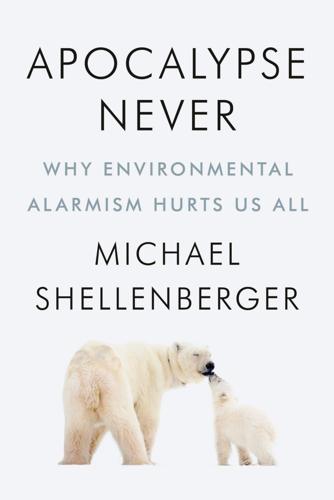
Apocalypse Never: Why Environmental Alarmism Hurts Us All
by
Michael Shellenberger
Published 28 Jun 2020
They would make clothing that would then be sold domestically and for export. There was a culture of when your clothes were torn you sewed them up with needle and thread. That really helped.” 8. Fast-Fashion for Africa Contrary to what I and others have long believed, the positive impacts of manufacturing outweigh the negative ones. We should thus feel pride, not guilt, when buying products made by people like Suparti. And environmentalists and the news media should stop suggesting that fast-fashion brands like H&M are behaving unethically for contracting with factories in poor nations. That doesn’t mean we shouldn’t want companies like Mattel, Nike, and H&M to improve factory conditions.
…
They chanted and handed out pamphlets. The activists pointed to estimates suggesting that the fashion industry was responsible for 10 percent of all carbon emissions.3 More than a half-dozen protesters in London, wearing blood-red dresses and white face paint, protested in front of H&M, a retailer that sells inexpensive “fast-fashion.”4 A post on Extinction Rebellion’s Facebook page read, “The industry still adheres to an archaic system of seasonal fashions, adding pressure to relentlessly create new fashion from new materials.”5 On its website, Extinction Rebellion wrote, “Globally we produce up to one hundred billion pieces of clothing a year, taking a terrible toll on the planet and people who make them.
…
Agricultural productivity has risen, but manufacturing was a higher percentage of the economy in the mid-1970s than it is today. “Most countries of Africa are too poor to be experiencing de-industrialisation,” writes Rodrik, “but that is precisely what seems to be taking place.”78 One exception is Ethiopia, which has attracted Calvin Klein, Tommy Hilfiger, and fast-fashion leader H&M,79 both because of its low wages compared to places like China and Indonesia, where they have risen, as well as to its investments in hydroelectric dams, the electricity grid, and roads.80 “Ethiopia has experienced GDP growth of more than 10 percent per annum over the last decade,” notes Rodrik, “due in large part to the increase in public investment, from 5 percent to 19 percent of GDP.”81 Ethiopia had to end and recover from a bloody seventeen-year civil war, which resulted in at least 1.4 million deaths, including one million from famine, before its government could invest in infrastructure.
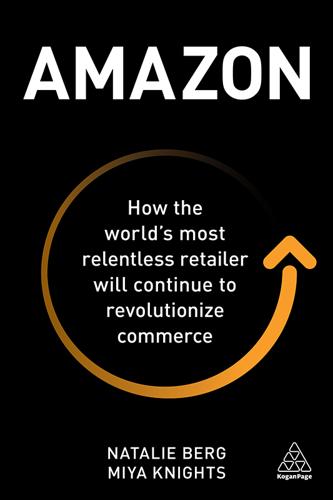
Amazon: How the World’s Most Relentless Retailer Will Continue to Revolutionize Commerce
by
Natalie Berg
and
Miya Knights
Published 28 Jan 2019
Doug Gurr, Amazon UK Country Manager, 20188 There is no denying that the growth of e-commerce is partially happening at the expense of legacy brick and mortar chains – but is it all Amazon’s fault? Not entirely. In a nutshell, mature modern retail markets are overstored, there has been a titanic shift in shopping habits, mobile has turned retail on its head, people are spending less on stuff and more on experiences, and new, disruptive brick and mortar retailers – think fast fashion and discount grocery – are stealing share from more established players. We are at the intersection of major technological, economic and societal changes that are profoundly reshaping the retail sector. Now let’s take a closer look at these shifts, and more specifically, how they’re leading retailers to rightsize their store portfolios.
…
Today, apparel, footwear and accessories make up around 80 per cent of most department stores’ sales compared to just 50 per cent a few decades ago.44 An increased focus on fashion may have once helped to differentiate from a growing superstore threat but today, despite their best efforts to invest in exclusive ranges and collaborate with other brands, department stores are left looking quite vulnerable. The so-called fast fashion chain Zara can take a coat from design stage to the sales floor in 25 days.45 Off-price retailers meanwhile offer prices up to 70 per cent lower than traditional department stores.46 The rise of these bricks and mortar disruptors means that department stores are no longer the cheapest, nor are they the most fashionable or the most convenient.
…
The unprecedented move raised eyebrows at the time but since the deal, more and more clothing retailers around the globe have added dining options to their stores. Uniqlo shoppers in Manhattan and Chicago can grab a Starbucks coffee instore. In the UK, Next is adding pizza and prosecco bars to its stores. Meanwhile, even fast fashion chains are jumping on the bandwagon – H&M’s Flax & Kale à Porter restaurant in Barcelona features a variety of organic and vegetarian food. ‘Until they invent actual replicators like on Star Trek, e-commerce is not a threat to the restaurant business.’ Jeff Benjamin, co-founder of Vetri Family (restaurant chain sold to Urban Outfitters)7 Luxury retailers have also tapped into this trend by extending their own brands or aligning with like-minded restaurants – Nobu, for example.
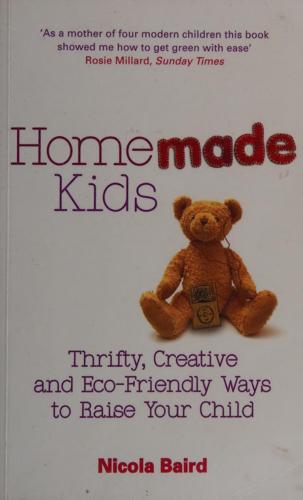
Homemade Kids: Thrifty, Creative and Eco-Friendly Ways to Raise Your Child
by
Nicola Baird
Published 14 Sep 2010
Penny, 38, with Netta, six, and Alma, three 67 = Homemade Kids How about adapting this idea and running a baby clothes swish? Just ask guests to bring a few items that are no longer worn by their child and a give-and-take mentality. You could One mum who has set out to tackle the failings of fast fashion is the utterly stylish Dilys Williams, who has worked with two renowned eco-designers Katharine Hamnett (big on organic) and Stella McCartney (won't use leather or fur). Dilys heads the : : i : London College of Fashion’s centre for sustainable fashion where she encourages tomorrow’s designers to create new pieces fashioned from well-made, older garments.
…
, 17 October 2008, www.lga.gov.uk/lga/aio/418961 8: Valuing Local Life YouthNet, ‘New report reveals benefits of volunteering’, 2008, www.youthnet.org/YouthNet.org/MediaandCampaigns/ PressReleases /VolunteerSatisfactionSurvey 268° Index 10:10 campaign 49, 247 nappy changing in bathroom 139-40 pillows 58 potions and lotions 177-9 renting baby bath 62 resources 259-60 Act on CO 48, 245, 247 adaptable, teaching children to be 2, 6, 155, 263 adapting something you already have 9, 27, 36, 52-3, 68, 143, Sil: Adeagbo, Lara 134 Aerogel 20 afternoon walk 162-3 Age of Stupid, The 22 air freight /air miles 96-7, 98-9, 109 air travel 225-6, 245 Allen, Sam 116 Around Britain Without A Plane 245 saving water 22, 26, 27, 28, 176, 177 sharing 60, 176 toys 87 batteries, avoiding 25 beauty or poison potions 153 Beresford, Elisabeth 61 bibliography 266-8 Big Womble, The 61 bicycles 63, 190, 204-8, 214, 226, 260-1 birth 4 boiler 16, 21, 30 Bonomini, Paul 61-2 Book at Bedtime 176 Baby and Childcare (Spock) 103-4 Baby Bjorn carrier 193, 262 babysitting 235 baby stays at home 182-3 circles 99, 157, 168, 185-7, 188, 189 costs 183-4, 224 no-fee 183-4 rules 183 books 9, 12, 61, 103, 131, 133, 145, 150, 173, 203, 217-18 bedtime reading 180 book clubs 228, 255 cookbooks/food books 106, 108, 254-5 as gifts 84, 86, 91 libraries 10, 24, 52, 57, 73, 86, swaps 4, 11, 184, 188, 189 91, 160, 176, 200, 224, 248 see also toys lighting whilst reading 35 nature books 80, 81, 82 second-hand 56, 79, 91 with a message 176 borrowing 3, 9, 12, 19, 50, 51, 55 books and DVDs 73, 248 buggy 195, 224 car seat 212 token schemes 186-7 see also childcare /childminding Babywatching (Morris) 174, 254 Barefoot Books 176 bathing 1, 125 bath fizz 153 bathing in sink 60 bathroom 39 case study 180-1 mats 40 269 Homemade clothes 66 etiquette 55 nappies 8, 133, 147 potty 146 toys 95 breast pump, electric 63 breastfeeding 3, 7, 96, 100-4, 254 Brominated flame retardants (BERs) 45-6 Bugaboo 196 buggy 54, 190, 193-7, 214, 260 accessories 54, 197 ATP (all-terrain pram) 196 basic easy fold-up 197 blanket 53 collapsible 12 designer 196 fun and fitness 199, 200 passing on your 200 posh prams 197 repair 197-8, 214 second life 201 space for 12 travelling to school 199 see also under individual buggy name buses 162, 195, 196, 201-2, 213. 215 car boot sales 11, 53, 57, 66, 87, 88, 91, 154 celebrations 89, 252 a birth 89-90 birthday parties 91-3 blessingways 89 thanking God 89-90 Centre Parcs 205 charity shops 10, 31, 32, 38, 42, 51, 53, 56, 57, 58, 64, 65, 66, 67, 69, 73, 90, 200 Child Trust Fund 88, 252 Child, Lauren 79 childcare 4, 7-8, 10, 11, 43, 50, 55-6, 69, 99, 157, 168, 181-8, 1395235 food and 42 green 1-3 nurseries 4, 16, 33, 43, 66, 69, J5< 832 98S LIVI 21 157, 195, 199, 200, 206, 220-1, 233, 234, 235, 246 sharing 4, 156-60, 167, 214, 231, 233-5 shopping and 50, 55-6, 67, 69 swaps 4, 11, 184, 188, 189 training 10 childminding see childcare, see also babysitting Chris Barnett Associates 15 cleaning your home 46-8 climate change 2, 6, 8, 15, 23, 26, 305365 103. 15552 Loy 225-6, 228, 232, 237, 244, 247, carbon footprint 15, 23, 24, 25, 49, 103, 105, 106, 127, 138, 225, 228, 229-30, 237, 238-9, 240, 245, 247, 248, 263, 268 cars 4, 208-11, 261-2 car clubs 4, 210, 212-13, 214 car seat 63, 211-12 eco kit 213 sharing journeys and vehicles 211-12, 213 case studies 3-4, 125, 157, 162-3, 180-1, 206, 223-4 cash as a gift 87-8, 252 Kids 248, 266 Climate Outreach Information Network (COIN) 245, 247 clothes: as draught excluders 18 as rags 47 borrowing 12 ethical shopping 71-2 fancy-dress 84 fast fashion, tackling 68-9 gifts 87 making 50 270° Index maternity 12 night 170, 172 outdoor 161, 163 reusing 157 second-hand 5, 56, 57, 64-6, Hg: sewing 69-70, 73 sleepovers 188 storage 29, 30 string and labelling 70-1 swap 56, 64-5, 73 swish 66-8, 252 cloths, throwing out dirty 48 communal land 231 community, local see local life, valuing Compassion in World Farming 116 Department for Children, Schools and Families 117 Diaper Free: The Gentle Wisdom of Natural Infant Hygiene (Bauer) VSI 32, 1332258 DIY 42, 60-1, 171 Dodds, Rosie 101 draught proofing 15-19, 23, 49 dressing-up box/kit 50, 76, 153, 158 driving see cars ‘earnest greens’ 3-4 eBay 5, 11, 12, 13, 59, 64, 65, 70, 73, 84, 85, 137, 159-60, 171, 193, 200, 251, 262 eco-club 49 Eden Project 82 electrical and electronic equipment 45, 61-2, 63, 104, 208, 250 electricity, selling back to grid 4, 22, 24, 25, 48, 122, 137, 240, 247 End of the Line (Clover) 108 Energy Advice 161 energy audit 17, 18, 248 energy buddy 49 energy companies, renewable 4, 21-2, 23, 25, 48 energy monitors/meters 24, 49 Energy Saving Trust 37, 49, 245, 247, 261 energy usage, measuring 24, 29 Environment Agency 124 Ergo 192, 193 Ethical Consumer 72 Ethical Junction 72 ethical products 4, 5, 11, 51, 68, 71-2, 72, 228, 250, 251 composting 6, 27, 32, 33, 79, 106, LO FEZ 12 3125) 126, 128, 129, 133, 134, 146, 147, 152, 179, 238-9, 256-7 Continuum Concept (Liedloff) 173, 235, 260 Copenhagen, 2009 23 cornflour gloop 152 ~ co-sleeping 3, 173-5, 189 cost of baby 3, 51, 73 cots'32, 51555, 62;-63271, 4171, 174, 188, 189, 192, 197, 260 CRAGS (carbon rationing action groups) 228 Craigslist 59, 251 Craven, Anna 223 creativity 3,9, 10, 80, 87, 93, 94, 96, 98, 147, 152-3, 168, 232, 236, 243, 244 cyber friends for mums 258, 264 seé also internet cycling 63, 190, 204-8, 214, 226, 260-1 fair trade 5,11, 72,.92,.99, 108, 109, 228, 251 fairy feeding stations 78-9 decorating 14, 30-1, 32, 33, 41, 42, 48, 53, 93 den-making kit 76 Fairyland Trust 78 Zils Homemade waste 96, 100, 106, 110, 112, 1235.118;/1205 1211225129, 257 fantasy playtime 252 farmers’ markets 96, 228-9 flapjacks, make your own 77-8 food 2, 96-9, 254-7 air miles 96-7, 98-9, 109 baby-led weaning 111 breastfeeding see breastfeeding childhood favourites 117-18 composting 106, 110, 117, 121, 122-3, 121, 256-7 cooking 2, 28, 43, 44, 89, 9685107,.112,122,:158, 222, 246 drinks 113, 114, 122 eco-friendly 255 family meals 109-10 finger foods 111 fish 103, 107-8, 109, 111, 178, 256 foraging 256 gifts of 76-8 growing 117-21, 122-3, 256-7 heating 122 leftovers 32, 106, 117, 118, 121-2 local 105-8 meat and dairy 4, 106, 107-8, Roe losi2 organic 4, 5, 99, 106, 109, 114-17, 177, 179, 246, 250, 253,255 . portions 110-11 purée 111,121 wholefoods 106, 110 forest schools 163 Forest Stewardship Council (FSC) 5, 35-6, 128, 245, 250 Foundation for the Study of Infant Deaths (FSID) 170, 174, 260 Frayn, Rebecca 225 Freecycle5s Le 122.13) 335.35, '51, 56, 59, 61, 73, 93, 1715195; 200, 241, 245-6, 251 freedom, offering 155-6, 167 freelance/home working 4 Friends of the Earth 4, 45, 246 friends: borrowing from 55, 56,57, 81 car journeys, sharing 207, 209, 210, 213 celebrations and 89, 90, 91, 93, 94,95, childcare, sharing 156, 157, 181, 183, 214, 230 clothes, second-hand 64-5, 66, re: energy buddies 49 feeding your baby 103 gifts from 12, 84, 87-8, 93, 94, 95 help with newborn 11 meeting up with8, 199, 231 nappies, second-hand 136 sharing with 48, 83 raw 106, 113 recipe books 255 seasonal 105-8 snacks 107, 109, 110, 111, 112, 161-3, 165, 183, 240 tips for eco-friendly eating habits 106-7 vegan 72, 78,91, 107, 108, 12252503 255 Kids sleepovers 188 visiting 55 visits from 24 Frugi 137 fundraising, ideas for 220-1 Furniture Reuse Network (FRN) 61 furniture 61,71, 251 vegetarian 4, 107, 108, 122, 250, 267, 268 games 164 ate- Index gardens and gardening 4, 117-21, 122-3, 166, 256-7 getting around 190-215 buggy see buggy car see cars cycling 63, 190, 204-8, 214, 226, 260-1 public transport 201-4, 214, 262 slings 190-2, 194, 201, 262 gifts 74-88, 94, 252-4 baby-welcoming 12 books as 79, 84, 86, 91 cash 87-8, 252 den-making kit 76 dressing-up kit 76 edible 76-8 fairy feeding stations 78-9 limitations 83-5 mini worlds 79 passed on and pre-loved 79 portraits and pictures 80 safe and tidy 83 scrapbook, make a 75 shared memories 86-7 spring a surprise 82 time as a 93-4 to give — or create with — your child 74-5 toys see toys wildlife care 80-2 going out of the house 160-7 Good Energy 4, 21-2, 23, 24, 25 good idea, copy a really 227-9 what’s so great about being brought up in a green way 237-40 Green Baby 72 Green Flag 161 Green People 71 Gumtree 59, 25] Hamnett, Katherine 68 Hayek, Salma 101 heat exchange system 21 high chairs 51, 54-5 Hippo 26 Holden, Patrick 109, 115 holiday, be inspired on 225-6 home: boiler 16-21 cost of 15 draught proofing 15-19, 23, 49 giving a green makeover 14-49, 247-9 insulation 19-21 making your home energy efficient 15-25 microgeneration 21—5 rethinking 30 simple steps to an eco-aware 8-13 waste in 8-9, 15-25, 26, 28, 49, 100, 106, 110, 113, 118, 120, 121; 122,129) 177,257 water use in 21, 26-8 homebirth 4 Homemade Kids 246 homeopathy 7 Howell, Fran 79 Howies 72 grants: insulation 20, 49, 245 nappy 131, 142, 147 solar panel 4 green: makeover, giving your home a 1449, 247-9 remembering a super green childhood 241-3 values 1-3, 217-18 I Want My Potty!
…
(Ross) 145 inspiration 225-31 insulation 19-21 internet 19, 135, 258, 259, 260, 264 273 Homemade jobs, rethinking 233-6 Kerr, Judith 86 Kids Mitchell, June Kumar 242 Mitchell, Mukti 242-3 Mitchell, Satish 242 kettle, filling 24 mobile phones 44-5, 248 mobiles 9 La Leche League 102, 254 labels, reading 177 laws, be empowered by new 226-7 learning with your baby 2, 6, 9-11, 229-30, 231, 263-4 libraries 10, 24, 52, 57, 73, 86, 91, 160, 176, 200, 224, 248 see also toys LILI (Low Impact Living Initiative) 229-30, 263 limescale, lemons for 46 Little Guide to Trees, A (Voake) 82 Little Guide to Wild Flowers, A (Voake) 82 local life, valuing 4, 10, 215-24, 231, 263-5 being active locally 222-4 case study 223-4 dreaming up changes 218-20 green ‘values’ 217-18 ideas for fundraising 220-1 neighbourhood, using your 9, 10, 73, 161, 216, 218, 219, 222, 226, 229, 231, 237, 252 London College of Fashion 68 London Recumbents 206 monitor: baby 1, 52, 172 energy 24, 49 Moses basket 53, 58, 170, 197 Murphy, Dominic 119 Myer, Andrew 15 Nadel, Jennifer 225-6 nails, cutting 9 nannies 4, 235. nappies 12443, 147-8, 257-8 best and worst 133 bleach, using 144 case study 125 champion 148 changing mat 1, 54, 140, 142, 143, 147 cloth 1, 64, 126, 130, 134, 135, 136,.137,1387139;.257,. 268 composting 125, 126, 128, 129, 133, 134, 147, 257 crises, solving 136-7 disposable 8, 124, 125, 126-9, 143 drying 138-9, 147 eco chic 257-8 elimination communication (EC) 131-3, 148, 258 fabric conditioner 144 Marie Curie 65 _ Marine Stewardship Council (MSC) 108, 109 maternity leave 10, 29, 104, 128, 149, 180, 230 McCartney, Stella 68 Maclaren buggy 197-8, 260 MDE 36 Mead, Margaret 216 mending 2, 6, 9, 46, 69, 197, 198, 214, 253 grants 131, 142, 147 how to change a nappy 139-41 laundry service 8, 125, 127, 131, 133, 134, 135, 138 142, 147, 258 liners, biodegradable 134 make your own washable 135 nappy bags 143-4 nappy networking 141-2 nappy-free playtime 148 microwaves 43-4, 104 C74: Index options 126-7 out and about 142-3 Real Nappy Helpline 130, 257, 258 Ooffoo 59, 60, 261 organic food 3, 5, 99, 109, 114-17 Organix 117 Oxfam 73 routine 125, 126 The Nappy Lady 130 things you won’t need 143-4 washable 8, 23, 55, 124, 125, 126-7, 129-30, 131, 134-6, 137-8 wipes 140, 148 wrappers 143 nappuccino 141-2 Nappy Ever After 134 Nappy Natter 147 National Council of Parent Teacher Associations 221 National Trust 263 Natural Collection 24, 72 Nature Babycare 128, 148 nature deficit disorder 253 Nature Network 253 nature table 154, 155 Naty 128 NCT (National Childbirth Trust) 57, 59963,,00, 735, LOLS 102; 104, 246, 261 Neal’s Yard 179, 204, 238, 263 nearly new sales 57, 59. 259 neighbourhood see local life, valuing next steps 232-44 night-time routine 180-1 No Waste Like Home (Poyzer) 120 NSPCC 182 nurseries 4, 16, 33, 43, 66, 69, 75, $3; 98,194; 11754255157:195, 199, 200, 206, nursery see room, baby’s pain relief, birth and 4 paint 248-9 best and worst 33 half-full tins, donating 33 lead 32 reusing 33 too much 33 VOC (volatile organic compounds) 31, 32, 33 Parabens 177 Parfum 178 parks 3, 10, 11, 54, 57, 112, 121, 122, 143, 144, 147, 158, 159, 160, 161, 164, 166, 167, 200, 206, 213, 214, 219, 221, 222 parties 75, 89, 90, 91-3, 94, 95, 12051575221,2245 22952313 255 People Tree 72 phthalates 178 plastic-bag-free movement 227 play dough 151-2 play groups 11, 33, 156, 161, 219 Politics of Breastfeeding, The (Palmer) 103 Pollen, Michael 97 portraits and pictures 80 potion and lotions 177-9 potty 40, 132, 135, 136, 144-7, 157 Poyzer, Penney 119-20 pre-loved items, finding see secondhand public transport 201-4, 214, 262 RAC 209 rail journeys 202-4, 214 rain, going outside in 166 Real Nappy Information Service 148 odours, removing 46 Omega-3 108, 116 One O’Clock clubs 219, 231 ald Homemade Reading see books recipes, for playing, fun 151-2 recycling 8, 63, 179, 207, 222, 228, 238-9, 251, 253 baby shower 57 batteries 25 clothes 71 food waste 110, 121, 257 gifts 84 insulation and 19 introducing children to idea of 6, 11 nappies 127, 130 school 240 shelves and 36 renewable energy 4, 21-2, 23, 24, 25, 48, 245 renewable energy companies 4, 21-2, 23, 25, 48 Resurgence 242 reusing items 3, 27, 36, 51, 59, 61, 68, 130, 138, 157, 178, 213, 235, 251 see also second-hand room, baby’s 29-31 flooring 34—5 heating 36-9 lighting 35 painting 31-3 photo art 31 safety 39-42 sharing bed/bedroom 31 shelves and storage 31, 35-6 tips for keeping babies cool 37 tips for keeping toddlers warm 38 Rutherford, Jonathan 233-4 safety 249 cupboards 39-40 DIY materials 42 falls 40-1 injuries to baby 40-1 plug sockets and air fresheners 41 sharp corners 41-2 Kids Teflon 42 Saltaire Village Society 220 Sandberg, Marlene 128 school: forest 163 governors 10, 227, 264 help your nearest 227 private 3 travelling to 199 scrap store, make a 153-4 scrapbook, make a 75 Scrapstore 33 seasons 154 second-hand 240, 260 books 91, 1/6 car seats 21] cars 208, 209 clothes 5, 56, 57, 64, 65-6, 70, 84 cots 171 gifts 84, 85, 87, 88, 91 insulation 19 internet sites 12, 13 Moses basket 170 nappies 136 shopping 50, 53, 54, 55-7, 64-5, 70, 73, 159 slings 191, 262 toys 32 self-sufficiency 6, 119 sewing 73, 154 shampoo 178 shared memories 86-7 sharing the work 11-12 shopping 50-73, 250-2 baby monitor 52 books see books buggy see buggy certified products 250 changing mat and nappy pack, easy-to-carry travel 54 charity shops 10, 31, 32, 38, 42, 51, 53, 56, 57, 58, 64, 65, 66, 67, 69, 73, 90, 200 276 Index china baby plate, bowl and mug set 52 clothes see clothes cost of 51 equipment you just won’t need Si fast fashion 68-9 feel good ethical shopping 71-3 food mixer, hand-held 54 gifts, practical 54-5 high chairs 51, 54-5 hiring equipment 62-4 no leak cup and lid, plastic 55 outdoor gear 54 pillows, v- or u-shaped 54 plastic cutlery 52 reconditioning, repairing and passing on 60-2 sale 57-8 second-hand 5, 12, 13, 19, 32, 50, 53, 54, 55-8, 64-5, 70, 73, 84, 85, 87, 88, 91, 136, 1595 703-171, 176, 19F, 192, 198, 208, 211, 240, 260, 262 sleeping bags, baby 52, 188 splash mat 52 storing and labelling 70-1 swapping 59-60, 66-8 shows 153 singing 166 skills, learning new 2, 6, 9-11, 229-30, 231, 263-4 sleeping 168-9 baby monitor 1, 52, 172 beds 171 black out curtains 172 co-sleeping 3, 173-5, 189 cots 171 night light 172 nightclothes 172 sleep consolation 169 sleep issues 260 sleeping bags 171-2 what sleep kit does my baby need?
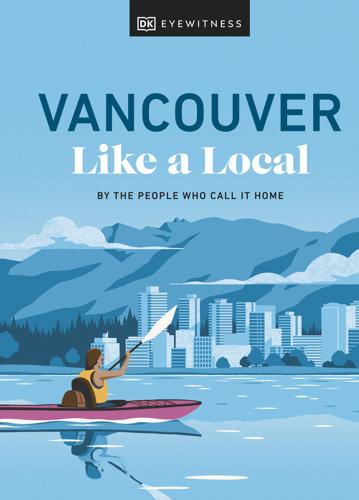
Vancouver Like a Local
by
Jacqueline Salomé
Here you’ll find an array of retailers, from big names to boutique pop-ups, all offering clothes, handbags, and shoes, and all at heavily reduced wholesale prices. Lines are usually out the door by 8am, so remember to set your alarm. g SHOP g Contents Vintage Gems Champions of sustainability, Vancouverites will choose pre-loved over fast fashion and flatpack any day. Have a rummage in these secondhand haunts and bag a one-of-a-kind piece that doesn’t cost the Earth. g SHOP g Contents Vintage Gems RELOVE FURNITURE THE MAIN EXCHANGE MINE & YOURS CARRIAGE HOUSE HEY JUDE COLLECTIVE WILL HUNTER & HARE MINTAGE MALL F AS IN FRANK g Vintage Gems g Contents Google Map RELOVE FURNITURE Map 5; 286 Keefer Street, Strathcona; ///routines.gravy.nests; www.relovefurniture.com Nestled away in the cool and quirky neighborhood of Strathcona, this retro consignment store embodies the effortlessly cool vibes of the community.
…
g Vintage Gems g Contents Google Map COLLECTIVE WILL Map 2; #1400–207 W Hastings Street, Gastown; ///plug.lamp.marginal; www.shopcollectivewill.com Owner and award-winning fashion blogger Randa Salloum skims the racks of local thrift stores so you don’t have to, styling ready-to-wear looks that breathe life into your closet. Her motivation? To inspire shoppers to ditch fast fashion and love what’s already out there. The fact that her community-minded shop also feels more like an exclusive design studio than a stuffy thrift store is a bonus, really. g Vintage Gems g Contents Google Map HUNTER & HARE Map 2; 227 Union Street, Strathcona; ///says.voted.tenders; www.hunterandhare.com With its carefully chosen selection of women’s clothing, this community consignment store is a fashion mood board come to life.

Limitarianism: The Case Against Extreme Wealth
by
Ingrid Robeyns
Published 16 Jan 2024
Most of the clothes that people in affluent societies wear are sold by companies that have annual profits ranging into the billions, turning their owners and major shareholders into decamillionaires or billionaires. Yet the labor conditions faced by workers in the garment industry are often appalling—and dangerous. In the fast-fashion industry, a limited number of global brands have considerable power over the supply chain, and they effectively dictate prices to suppliers, who are then left with little margin to pay decent wages and create safe working environments. The men and women at the top of these fashion retail companies have sold their souls to predatory capitalism—if they hadn’t, they would choose to establish decent conditions for the workers who make their products, thereby accepting that this might come at the cost of lower profits.
…
In fact, all other individuals would benefit from the huge financial investments that the increased tax revenue would make possible. The global poor would benefit, because if profit-maximization ceases to be worthwhile (why make those dizzying sums if you can’t keep them?), the wages of the workers in factories making fast fashion or technological gadgets could be raised to the level of a living wage (a wage that allows workers to lead a decent life). The disadvantaged in affluent societies would benefit from social policies such as more accessible mental-health services or housing for the homeless. Those living in areas where the harms of global warming will be greatest, and who would otherwise see their opportunities quickly diminish in the coming years, could be kept safe from the harmful effects of super-rich people’s historically polluting, climate-degrading lifestyles.
…
This factory produces clothing not just for Patagonia but also for fifteen other international brands, such as H&M and Zara. The workers are reportedly forced to work excessively long days and are paid much less than a living wage. See Yara van Heugten, “Duurzaam kledingmerk Patagonia produceert in dezelfde fabrieken als fast-fashion, textielmedewerkers uitgebuit,” June 10, 2023, ftm.nl/artikelen/patagonia-heeft-grote-moeite-met-deugen. 13. That most of the very wealthy do not want to talk about inequalities and wealth concentration is confirmed by all of my interviewees, and by several different strands of research and sources.
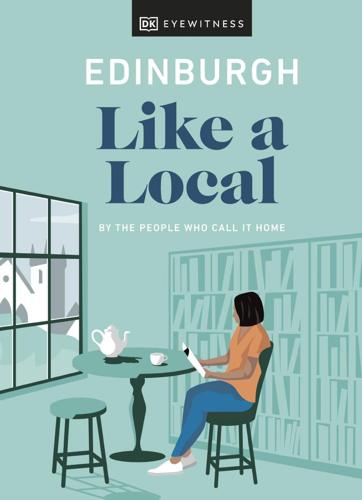
Edinburgh Like a Local: By the People Who Call It Home
by
Dk Eyewitness
Published 28 Sep 2021
D D G G ’S ’S S S T T A A B L E S R BOL E A S D RO A D Pull up a stool at V V E E 56 NORTH N N N N E E L L Saunter into student territory to attend this trendy bar’s Scottish gin and cheese SHOP L AU R I S L T A O U N R C E I S T O N P L A PL ACE masterclass. Stick to gin or try a “recovery smoothie” if you’re GEORGE SQUARE GEORGE SQUARE in need of a wee pick-me-up. Univer U sit niv y ofersity of B B EdinburEdinbur gh gh U U C C C S C SOUTHSIDE OUTHSIDE L L E E U U Forget fast fashion and generic high C C H H S S T T he Me he Me adows adows T T street stores: locals love nothing M M E L E V L I V L L I L E L E more than scouting for vintage Established in 2019, D R D I R V I E V E Finish up at Holyrood Distillery PICKERING’S GIN is Edinburgh’s newest gems, celebrating local designers Tour the distillery and sample its distillery.
…
filling and Pickering’s is in no short supply. 084-085_LAL_Edinburgh.indd 85 09/08/2021 16:46 086-087_LAL_Edinburgh.indd 86 09/08/2021 16:46 086-087_LAL_Edinburgh.indd 87 09/08/2021 16:46 S H O P Vintage Gems Never ones to follow the crowd, thrifty Edinburgers will choose pre-loved over fast fashion any day. Have a rummage in the city’s best second-hand haunts and you might just find yourself a one-of-a-kind piece. GODIVA BOUTIQUE Map 2; 9 West Port, Old Town; ///strain.formed.client; www.godivaboutique.co.uk Designer wear in the front and vintage finds in the back, what brings Godiva’s collection together is a strong focus on sustainability – oh, and a badass aesthetic to match.
…
GODIVA BOUTIQUE Map 2; 9 West Port, Old Town; ///strain.formed.client; www.godivaboutique.co.uk Designer wear in the front and vintage finds in the back, what brings Godiva’s collection together is a strong focus on sustainability – oh, and a badass aesthetic to match. Owner Fleur MacIntosh channels her inner Lady Godiva (whose fuchsia silhouet e can be seen riding a horned zebra on the wall) to fight the good fight against what she calls “the soul-sucking monotony of fast fashion”. Good on you, lass. ARMSTRONGS VINTAGE Map 1; 83 Grassmarket, Old Town; ///mouse.during.party; www.armstrongsvintage.co.uk The signature red front of this vintage chain can be spot ed at numerous branches about town, but this Grassmarket flagship is the biggest and most theatrical of all. Mannequins kitted out in 88 086-087_LAL_Edinburgh.indd 87 09/08/2021 16:46 088-091_LAL_Edinburgh.indd 88 09/08/2021 16:46 V I N T A G E G E M S fedoras and bold-printed petticoats usher you inside, where, exploding from antique trunks and squeezed into floor-to-ceiling rails, you’ll find second- (or third- or fourth-) hand bomber jackets, bridal dresses, more denim than you could ever imagine, and all the accessories to match.
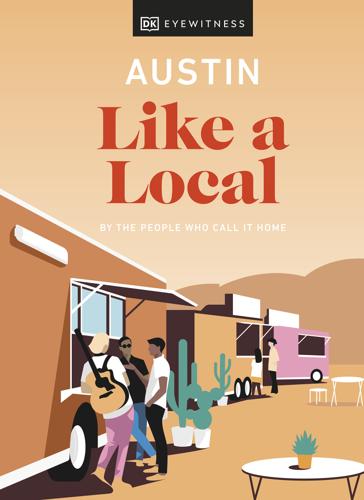
Austin Like a Local
by
DK
Order a craft beer, select your anthem, and sing your heart out to the good-time crowd. The Continental Club ///swatted.puddles.revolts Since it opened in 1955, The Continental Club has hosted the likes of musical legends Stevie Ray Vaughan and Sonic Youth. g Contents SHOP Forget strip malls and fast fashion: Austinites prefer to shop indie, scouting for vintage treasures, celebrating local designers, and stocking up on organic produce. g Contents SHOP Thrift and Vintage Stores Street Style Austin Accessories Farmers’ Markets and Grocers Book Nooks Home Touches Take a Tour: An afternoon shopping in North Loop g SHOP g Contents Thrift and Vintage Stores Austinites love all things unique, and the city’s thrift and vintage stores are a good place to build an original aesthetic.
…
g Street Style g Contents Google Map MIRANDA BENNETT STUDIO Map 2; 1211 East 11th Street, Central East Austin; ///stubble.dividing.brighter; www.shopmirandabennett.com Miranda Bennett was shocked when she discovered the environmental impact of the fashion industry as a student. Her studio aims to redress the balance – she’s partnered with a local manufacturer that trains up refugees, the clothes are colored with natural dyes, and every fabric scrap is utilized. Goodbye fast fashion. Shop | Street Style Liked by the locals “Shopping in East Austin, in addition to working in the area, gives everyday transactions an even greater level of meaning because each dollar spent in the area translates to heartfelt livelihoods for so many locals.” MIRANDA BENNETT, OWNER OF MIRANDA BENNETT STUDIO g SHOP g Contents Austin Accessories Unique jewelry pieces?

Less Is More: How Degrowth Will Save the World
by
Jason Hickel
Published 12 Aug 2020
The average American today purchases five times as many garments each year as they did in 1980. In the UK, textile purchases surged by 37% in the four years from 2001 to 2005, as ‘fast-fashion’ techniques exploded into the mainstream.10 The industry’s material use has skyrocketed to over 100 million tons per year, and energy, water and land use have soared right along with it. If we take the American data as a standard, we can assume that regulations against fast fashion alone could in theory cut textile throughput by up to 80%, without compromising people’s access to the clothes they need. There are many ways to curb the power of advertising.
…
The policies I’ve suggested above are likely to reduce total industrial production. This might be OK from the perspective of human needs (none of us would be worse off if our smartphones lasted twice as long), but it does leave us with a difficult question. As products last longer, as we shift to sharing things, and as we slash food waste and scale down fast fashion, employment in these industries will decline and jobs will disappear across the supply chains. In other words, as our economy becomes more rational and efficient, it will require less labour. From one perspective, this is fantastic news. It means that fewer lives will be wasted in needless jobs, producing and selling things that society doesn’t actually require.

Fodor's Seoul
by
Fodor's Travel Guides
Published 29 Nov 2022
ESungin-dong, Jongno-gu, Dongdaemun wenglish.seoul.go.kr/dongmyo-flea-market-2 mDongmyo. DOOTA Mall MALL | This eight-story mega mall is brimming with more than 500 stores selling the latest fashion trends. An estimated three million foreign visitors a year peruse the mix of luxury boutiques, emerging designers, sportswear, and fast fashion encompassed in this late-night shoppers’ paradise. If you’re looking for the hottest trends in K-style, this is the place to break out your credit card. E275 Jangchungdan-ro, Jung-gu, Dongdaemun P02/3398–3333 wwww.doota-mall.com mDongdaemun. HGwangjang Market MARKET | One of the largest traditional markets in the country, Gwangjang Market has become famous over the past few years for its restaurants and street food vendors.
…
Pyeonghwa Market MARKET | After the Korean War, North Korean refugees flocked to the Dongdaemun area and built up a thriving textile industry. This low-price shopping destination, named after the Korean word for “peace,” grew from those humble beginnings to what is now the largest wholesale clothing market in Korea. The market is the epitome of fast fashion, with its on-site factory able to design, produce, and distribute up-to-the-minute K-style in a 72-hour window. Since it’s mainly a wholesale market, it’s open overnight to cater to retailers who want to display new trends first thing in the morning. The market is also known for its secondhand book section, featuring tomes in a wide array of languages.
…
It’s easy to tell which stores sell what as many of the shops display half their items out front. You’ll find a range of similar items along the street at varying price points, and most items are not available to try on. Evergreen items like T-shirts and jeans can be a good deal, but beware that these fast fashion items often come apart after a few washes. E20, Hongik-ro, Mapo-gu, Hongdae mHongik University Station. Somebooks BOOKS | Located on the first floor of Some Institute of Picture Books, a school dedicated to the crafting of picture books, Somebooks is a gallery and bookstore featuring a compelling collection of works by local artists.

What If We Get It Right?: Visions of Climate Futures
by
Ayana Elizabeth Johnson
Published 17 Sep 2024
By 2070, one-fifth of the planet could be as scorchingly hot as the (rapidly expanding) Sahara Desert. And already, around one-quarter of humanity (mostly in poor countries) is dealing with drought, which leads to famine. Why is all this badness happening? Humans. We are burning ancient plants and animals (aka fossil fuels, not renewable) to jet around and wear fast fashion, and build highways and skyscrapers, and heat outdoor swimming pools in autumn, and shiver inside in summer, and convert lush ecosystems into sprawling and unwalkable suburbs with silly lawns, and commute alone in our cars to jobs that do not change this reckless status quo, and manufacture things we don’t need (probably plastic things), and power the devices we’re addicted to so we can “like” posts about biodiversity loss and climate disasters, and then proceed unchanged.
…
” – The fashion industry is responsible for about 10% of global carbon emissions and 20% of industrial water pollution. Textiles alone use nearly 10% of the plastic produced each year. – Americans dispose of about 13 million tons of clothing and footwear each year, of which only 13% is recycled. The average fast fashion garment is worn as little as 7 times before it is discarded. – Roughly one-third of all food produced in the world is wasted, accounting for 8% of global greenhouse gas emissions. – Roughly 75% of U.S. public-school science teachers cover climate change, but only devote 1 or 2 hours to it per year on average
…
It’s a tactic for bringing the problem back to the source. Ayana: So, for example: “Beverage company, you’re in charge of all the plastic bottles you make. It’s not my problem, it’s your problem. You figure out how to deal with those.” Kendra: And some governments are extending this to clothes. If you’re making fast fashion that only lasts eight to ten wears, its disposal is your problem, not our problem. Ayana: What other advice do you have for a-decade-ago-Kendra? Kendra: Show don’t tell. If nobody’s dying in your story, it’s okay to make a joke. Lead with humanity, because when we’re talking about climate change, in many ways, at the risk of being species-ist, we’re talking about saving humanity.

No. More. Plastic.: What You Can Do to Make a Difference – the #2minutesolution
by
Martin Dorey
Published 2 May 2018
That’s a lot of out-of-fashion, unloved and excess fabric going to landfill. It’s unnecessary. Also, think about buying quality fabrics. Not only do man-made fibres shed tiny fragments of plastic when you wash them, they also never break down! So your nylon flares will live on for ever, somewhere. Aaargh! The #2minutesolution Forget fast fashion – where you buy something new every season and throw it out soon after – and invest your money in ‘slow fashion’, a concept that’s being taken up by ethical brands everywhere. Buy well, buy once. Buy decent fabric. Some technical fashion brands, like Patagonia, Aplkit and Finisterre, offer repair services to their customers, so you can keep their gear going for longer.

Buy Now, Pay Later: The Extraordinary Story of Afterpay
by
Jonathan Shapiro
and
James Eyers
Published 2 Aug 2021
Justin’s mother, Lynette, was the sister of Anthony’s father, Malcolm. She’d married Rod Levis, who founded Cue Group in the late 1960s after he returned from London’s Carnaby Street with Beatles T-shirts that sold out in an instant. Cue is well known in Australia for its commitment to local manufacturing and its niche positioning between high-street fast fashion and high-end designer wear. The family connection didn’t make the deal any easier. Cue had met Zip Money months before and wasn’t comfortable with the idea of marketing credit to its customers. They were equally apprehensive about alternatives. While Eisen was pushing the potential for bigger orders and new customers, Justin thought the idea could help him save money by potentially ditching the cumbersome lay-by process.
…
The coronavirus pandemic had moved the scales: at the start of the year, the malls had been worth $50 billion, while Afterpay was valued at $8 billion. With the virus receding, Sydney was opening up for business and events, and Australian fashion was getting the spring back in its step. It had survived the worst of the pandemic, and before that the hordes of foreign, ‘fast fashion’ invaders such as Zara, H&M and Uniqlo, which had opened stores in iconic locations in a challenge to local brands. Afterpay had consummated its alliance with fashion in October 2020, when it was unveiled as the lead sponsor of Australian Fashion Week. That ended the almost uninterrupted patronage of MercedesBenz since the event’s inception in 1996.
…
Jones 231 Bailey, Harley 55 Baillie Gifford 236 Bain, Iona 320 Baker, Craig 55 Bancroft, Cameron 197 banking sector bank bashing 139–40, 250 banking code of conduct 324 business model 336–7 Hayne Royal Commission 140, 141, 195, 205, 215, 218 innovation, slow to adopt 219 Beadle, Tom 252, 255, 299, 314 Beard, Phil ‘Scoop’ 132–3,134 Beard, Sandy 99 Bell, Colin 134 Bell Potter 107, 113, 121, 132, 184, 251 Bensimon, Albert 48 Berkman, David 50 Berkshire Hathaway 125, 234 BHP 70–1 Bill Me Later 77, 81 Blackrock 293, 294 Bligh, Anna 195, 217 Blockley, Lance 222 Bloomfield, George 9 Bolton, Faye 3 bond rates 186, 266, 333–4, 335 tech-stock valuations and 334–5 Bortoli, Luke 236, 264, 288, 289 Bos, Wayne 30 Boudrie, Nick 168 Bragg, Andrew 249–50, 251, 286, 296, 297, 300, 302, 304, 329 Brenner, Catherine 199 Brierley, Ron 17, 18, 24, 26–7, 33, 36 Afterpay 83, 117 Brierley Investments 27 child pornography possession 259 GPG see Guinness Peat Group (GPG) IEL see Industrial Equity Limited (IEL) Weiss and 26 Brierley Mercantile 117 Brighte 201, 325 Brinkman, Wens 61 British Fashion Council 323 Brody, Gerard 144, 148, 201, 286, 329 Bryan, Mark 113, 223 Bryett, Wez 76, 77 Buckingham, William 43 Buckingham’s 43 Buffet, Warren 125, 178–9 bushfires 2019-2020 260, 261 Business Review Weekly 7 buy now, pay later (BNPL) sector banks’ attitude towards 217 birth of industry 48 code of conduct 224, 286, 298, 324–6 definition 48 different models 317–18, 322 ‘no-surcharge’ rules 254, 255, 262, 301, 302, 341 regulation see regulation of BNPL sector 201 retail payment economy, proportion 264 self-regulation 223, 224, 286, 298–9 Cahill, Antony 216 Caledonia 127 Caliburn 22, 23, 24, 63 Calvert-Jones, John 59, 60, 62, 84 Campbell, Rob 19, 35 Cannon-Brookes, Mike 101, 156, 201, 277, 281 Carnegie, Mark 14, 39, 40, 99, 311–12 Carr, Tony 109 Catalina restaurant 305, 306 Cato, Sue 199 Cato & Clegg 199, 200, 242 Centennial Funds Management 95 Certegy 48, 49–50, 201 Certegy-Ezi-Pay 52 consumer groups and regulators 50 Freedom Australia deal 48 jewellery sector 48–9 Chandra, Ashwini 169–70 Change Up 116 Chanos, Jim 177, 178 Chappelli Cycles 100 Charlton, Andrew 196, 200, 208, 209, 249 Chen, Francis Sy Lei 5 Chester, Karen 340 China 275–6 Chippendale, Phillip 175, 246 Chung, Juliet 295 Cisco 98 Citibank 168, 169, 184, 251 Clearpay 184, 280, 322, 323 London Fashion Week 323 Cleeve, Adrian 54, 55, 57, 58, 59, 60, 62, 69, 111 ATC Capital 65, 116, 159, 267 Cleevecorp 115–16, 159 death 111, 115 TAFMO 64, 65 Touchcorp IPO 58, 59, 67–8, 94 Cleeve, Audrey 69 Cleeve, Damien 59, 66, 69 Cleeve, estate of Adrian Afterpay Touch shareholding 118 legal proceedings 159, 267 Cleeve, Keith 58, 59, 60, 62, 69 Cleeve, Laurence 59, 66, 69 Cleeve, Linley 69 Cleeve, Terence 69, 116 Cleevecorp 115–16, 159 Clegg, Brett 199, 211, 242 CNN Money 15, 16 Coats 31–3 Coatue Management 234–5, 257, 258, 282, 295, 335 Coburn, Niall 142 code of conduct 224, 286, 298, 324–8 ASIC input 327 consumer groups and 326, 328–9 credit checks 327–8 politicians’ response 329 Coleman, Charles Payson Chase 234, 295 Commonwealth Bank 216–17 BNPL scheme, creation of own 338, 339 CommSec 318 Hayne Banking Royal Commission 215, 337 Klarna investment 247–8, 337–8 money-laundering allegations 151–2, 217–18 Comyn, Matt 215, 217–18, 247, 337 Connal, Simon 149 Connolly, Paul 55 Consumer Action Law Centre 144, 148, 201, 286, 329 consumer people power 311 Consumer’s Federation of Australia 328 Coppleson, Richard 134–5, 136–7, 165–6, 167, 193, 225 The Coppo Report 134 Cordukes, James 339 Costello, Peter 21 Council of Small Business Organisations Australia 262 Course, Phil 61, 62, 63, 65 COVID-19 260–1, 269 Centrelink lines 269, 271 ecommerce during 278 emergency health response plan 265 government response 269–71 JobKeeper 271 share market reactions 265–7 Team Australia 269, 300–1 US Federal Reserve 273 Cox, Karen 249, 328–9 Creasy, Stella 322 credit 42 Bankcards 46, 120, 218 big retailers and 44–5 cash orders 43, 44 consumer leases 50 credit cards 40, 41, 46 instalments, purchases by 42 interest-free loans 50, 51 lay-by 41, 44, 45, 46–7 millennials and credit cards 40, 41, 52, 73, 208, 217, 222 Transax 47 credit cards 40, 41, 46 Bankcards 46, 120, 218 ‘card not present’ fraud 119 chargeback 119 fraud 119 history in Australia 218–19 millennials and 40, 41, 52, 73, 208, 217, 222 regulation of 220–2 virtual cards 279 Crennan, Daniel 143 Cribb, Tom 58, 66, 67, 168, 169, 184 Crosby, Lynton 340 Crutchfield, Philip 101 cryptocurrencies 311 Cue Group 87, 88, 113, 130 Cureton, Graeme 63, 71, 83 CVC Capital 84, 99, 117 Cyan Investment Management 95, 107 Daly, Tony 11 David Jones 20, 44 Davies, Enno 55 Davis, Jim Woodson 238, 295 Davis, Melissa 243 day traders 278–9, 308–10 De Carvalho, Fabio 76, 77, 86, 87, 89 de Smet, Jan 61, 63 Debelle, Guy 266 Dey, Sujit 162–4, 167 Diamond, Larry 100, 211, 270, 279 Dish 153 Dogecoin 311 Don, Gil 246 Donoghue, Jon 289 Douglass, Hamish 96, 181 Druckenmiller, Stan 233 Drummond, Shaun 101, 103 Eastern Suburbs Rugby Club 11 eBay 13, 14, 77, 98, 157, 180, 240, 263 ecommerce 47 EFTPOS direct-debit system 46, 219 Einhorn, David 177, 178 Eisen, Anita 19, 21 Eisen, Anthony Mathew 13, 14, 17, 19, 24, 52, 133, 341–2 Adrian Cleeve and 58, 63 Afterpay see Afterpay background 19, 20 Byron Bay house 194, 303 early career 21 education 21 fortune, personal 277, 333 GPG 19, 25, 30, 35–6, 37, 63 Molnar, meeting 39, 52 Eisen, Malcolm 19, 20, 21, 24 Eisen, Samantha 24 Eley Griffiths 104, 105, 107, 187, 293 Ellerston 241 Emerson, Craig 209–10 Enron 177 Everaardt, Tineka 151 Ezra, Adam 131, 279 FAANG stocks 182 Facebook 98, 102, 122, 263, 289 factoring 181 Fahour, Ahmed 257 Fairfax 126–7 ‘fallacy of composition’ 254 Farmers 44 Farquhar, Scott 101–2, 277, 281 fashion retail sector 306 fast fashion 307 Feit, Alon 246 Fergie, Dean 95, 107 Ferrington, Rebecca 55 financial deregulation 119 Find the Moat blogger 121–2, 125 Fink, Larry 302 Firetrail 272, 292 First Sentier 292 Fisher, Emma 335 FlexiGroup 117, 325 FlexiRent 50, 51 Floyd, George 277 Forrest, Andrew 294 Fortescue Metals Group 294 Frydenberg, Josh 251, 261, 300–1, 326 G20 meetings 250, 261 Gabriele, Mario 313 Galloway, Scott 285, 289 Gamble, Duncan 187 Gamble, Neil 23 GameStop 308–10, 311, 319 Garg, Akash 242, 243 Gates, Bill 302 Gavin, Tim 11 Gazard, David 200, 214 Ge, Xin 242, 243 GE Finance 51, 100 General Pants 87, 103, 106, 107, 111 Gibbs, Tony 34, 35 Gill, Keith 309 Gillard, Julia 196 Gillezeau, Natasha 307 Ginges, Agnes 6 Ginges, Berel 6, 9 Ginges, Max 9–10 Glass, Max 20 Glen, John 322 Global Financial Crisis 33, 34, 52, 74 Gniwisch, Isaac 15, 16 Gniwisch, Julie 15 Gniwisch, Shmuel (Sam) 14–15, 16, 40 Godfreys 49–50 Gold, Fred 10 Gold, Gitta 10 Goldman Sachs 33, 66, 67, 105, 251–2, 274 Good Shepherd Microfinance 201, 204–6 Google 54, 92, 102, 127, 182, 240, 263, 289 Goot, Robert 4 Grace Bros 44 Graf, Ervin 9 Grant, Luke 210 Gray, Peter 100, 315, 316, 318 Great Depression 44 Greenberg, Paul 77–8, 83, 114, 129, 188 Online Retailer Conference & Expo 86 Greenspan, Alan 180 Grimshaw, Tracy 151 Gross, Bill 15, 16 Guinness Peat Group (GPG) 17, 18, 24, 28, 60 assets of, realising 35–7 Coats 31–3 Eisen hiring 30 history 28–9 late 1995-2005, activities 29–35 TAFMO, sale of 64 Guscic, John 112 Guthrie, Fiona 328, 338 Hakoah Club, Bondi 5 Hallas, Peter 8 Hallas, Yvonne 8 Halvorsen, Andreas Ole 235 Hammond, John 9 Hancock, David 52, 53, 73, 74, 108, 120, 130, 133, 229, 236 Hanneman, Gerhard 55 Harris, Richard 74, 75, 87, 108, 160–1 Harry, Troy 84, 85, 117, 125–6, 273 Hartzer, Brian 259 Harvey, Gerry 50, 149, 225 Harvey Norman 50, 51, 100 Hatton, Lee 339 Hawkins, Alan 28 Hayne, David 173 Hayne, Kenneth 141 Hayne Royal Commission 140, 141, 195, 205, 215, 218, 287 hedge funds 231, 295, 310–11 Hempton, John 191–2 Henry, Ken 141, 206, 216 Higgins, Jonathon 279, 291 Hodge, Michael 141 Hodgens, Patrick 272 Hogan, Sean 84 Holmes à Court, Robert 18, 27, 70 Holocaust 2, 5, 6, 8 Howard, John 21 Hughes, Anthony 18 Hughes, Sean 297, 298 Hui, Gary 119, 120 Hume, Jane 211–12, 213, 329 Hungary, post-war 2 Hunt, Peter 23 Hurrigan, Mr 3, 5 Ice Online 16, 39, 40, 55, 307, 311 The Iconic 134, 135 Immelt, Jeff 51 Industrial Equity Limited (IEL) 26, 27, 28 initial public offers (IPOs) 98–9 Innovative Payments 53 instalments, purchases by 42 instore retail 113, 130 Intellect 60, 63 point of sale terminals 60 TAFMO 61, 63 interest rates, low 180, 185 International Monetary Fund 261 Investors Mutual 127, 128, 291–2 Jackson, Shaun 55 Jacob, Ashok 71, 84, 112 Jacobsson, Victor 190 Jasper, Leigh 155 Jeans, Neil 258 Jefferies, Mike 30, 54, 58, 60, 66 Afterpay 83, 84 TAFMO 63, 64 Touchcorp CEO 116 Touchcorp shares 65, 67, 68 Jetstar 135 Jewish community financial success of 7–8, 9 Hungarian Jewish immigrants 5, 8 Melbourne 5, 8 Polish Jewish immigrants 5, 8 rag trade 9, 19 Sydney 3, 5, 7–8 Jewish Welfare Society 2 Johnson, Mark 35 Johnson, Steven 288 Jones, Alfred Winslow 231 Jones, Stephen 329 J.P.
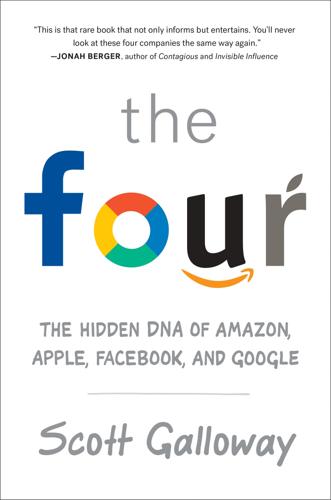
The Four: How Amazon, Apple, Facebook, and Google Divided and Conquered the World
by
Scott Galloway
Published 2 Oct 2017
Of the ten biggest retailers in 1990, only two remain on the list in 2016.20,21 Amazon, born in 1994, registered more revenue after twenty-two years in 2016 ($120 billion) than Walmart, founded in 1962, did after thirty-five years in 1997 ($112 billion).22,23 In 2016, retail could largely be described as the crazy success of Amazon and the disaster that is the rest of the sector, with a few exceptions, such as Sephora, fast fashion, and Warby Parker. E-commerce firms die with a whimper, not a bang, because while brick-and-mortar retail has a face, e-commerce deaths are faceless and not as jarring. One day that website you regularly visited just isn’t there—so you find some other site and never look back. Dead man (retailer) walking begins with margin erosion—the cholesterol of retail—and ends with endless promotions and sales.
…
The plummeting price of processing power (Moore’s Law again), coupled with an increase in bandwidth and a new generation of leadership that has digital in their DNA, has produced bigger ladders than anyone ever expected. ESPN, J.Crew, and Jeb Bush . . . all unassailable, no? No. Digital ladders (over-the-top video, fast fashion, and @realdonald trump) can vault almost any wall. So, what’s a ridiculously successful firm to do? Malcolm Gladwell, the Jesus of business books, highlights the parable of David and Goliath to make the key point: don’t fight on other people’s terms. In other words, once you’ve made the jump to light speed as a tech firm, you need to immunize yourself from the same conquering weapons your army levied on the befuddled prey.
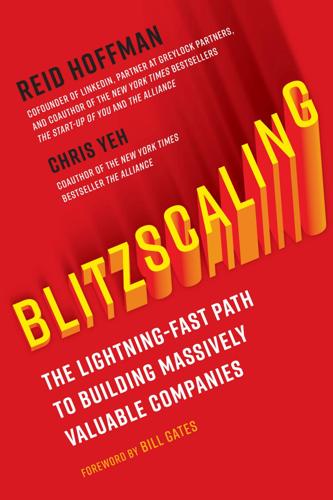
Blitzscaling: The Lightning-Fast Path to Building Massively Valuable Companies
by
Reid Hoffman
and
Chris Yeh
Published 14 Apr 2018
If you are a manager or a leader who is trying to rapidly scale a project or a business unit within a larger company, blitzscaling can help you too. And while we draw these lessons primarily from the world of high tech, many of the principles and frameworks the book lays out (especially regarding people management) are applicable to high-growth companies in most industries worldwide, from European fast-fashion retailers to Texan oil shale companies. Even organizations outside the business world can use blitzscaling to their advantage. Upstart presidential campaigns and nonprofits serving the underprivileged have used the levers of blitzscaling to overturn conventional wisdom and achieve massive results.
…
Its global network of stores gives it broad distribution, and while apparel doesn’t offer any strong network effects, clothing does command a fair amount of consumer loyalty, enabling Zara to lock in a degree of long-term advantage. What’s even more important, however, is that Zara actually uses the techniques of blitzscaling to run its business. Speed is the foundation of Zara’s “fast fashion” business strategy, which, for decades, can be summarized in a single sentence: “Give customers what they want and get it to them faster than anyone else.” Every aspect of Zara’s business is organized around achieving that speed. The results are impressive: Zara takes only two weeks to develop a new product and get it into stores—the industry average is six months—and launches over ten thousand new designs per year, a rate several times that of competitors like H&M and Gap.
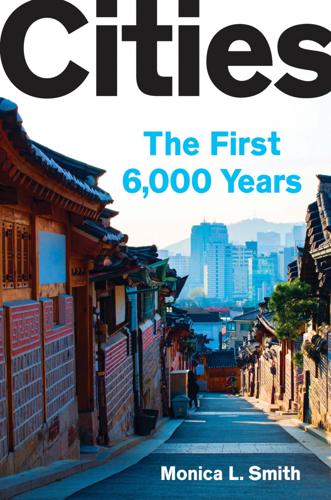
Cities: The First 6,000 Years
by
Monica L. Smith
Published 31 Mar 2019
Trash is an affirming badge of affluence, a sure sign that the person throwing something away has been able to consume the contents of a container or has been able to replace a worn-out item with something new. It’s not surprising that people in Mesopotamia would have wanted more bowls, even if they already had a lot of them, and they certainly wanted more of the food that would have been carried in those bowls. And the only way to participate in the fast-fashion turnover of style is to just get rid of some things, for which the easiest solution is simply to throw them away, whether straight into the trash or by donating them to an individual or an institution that wants our castoffs. In sum, the idea of “too much” trash is not a modern problem but an urban condition.
…
sliding scale of quality: Archana Choksi, “Pottery Manufacturing Techniques: The Role of Technical Constraints and Personal Choices,” Man and Environment 23, no. 2 (1998): 107–18. The abundant statuary of the Roman world: Elizabeth Bartman, “Hair and the Artifice of Roman Female Adornment,” American Journal of Archaeology 105, no. 1 (2001): 1–25. consumers and producers are equally: Audrey Ou, “Copying and Pasting in Fast Fashion: Just the Sellers’ Fault?,” Business Today (Fall 2016): 20–21. incredible variety of kitschy souvenirs: Yuko Minowa and Terrence H. Witkowski, “Spectator Consumption Practices at the Roman Games,” Journal of Historical Research in Marketing 4, no. 4 (2012): 510–31. kilns in places like Jingdezhen: Stacey Pierson, “Production, Distribution, and Aesthetics: Abundance and Chinese Porcelain from Jingdezhen, AD 1350–1800,” in Smith, Abundance, 229–50.

Badvertising
by
Andrew Simms
But consumer culture is so normalised by ubiquitous advertising that it is hard to see how recent and how strange its extreme, contemporary variant has become. Of course traders have always advertised their wares. But the post ‘Mad Men’ world of advertising and the consumerism it promotes is of a whole other order. Products that are short-lived, with built-in obsolescence designed to be toyed with then thrown away, fast fashion, plastics and endlessly upgraded gadgets. These things didn’t just happen, they were the result of some very specific shifts over little more than two generations in recent decades. A number of factors particular to Western economies and societies in the latter part of the twentieth century created and then fuelled the advertising-driven overconsumption that we live with today.
…
During 2021–22, the ASA also refused to investigate green claims by major polluters including Chevron, McDonald’s, Standard Chartered Bank and Barclays (the latter of which is the biggest provider of fossil fuel finance among UK banks, $190.5 billion between 2016 and 202146), as well as any green claims made in ads by the fast fashion and energy sectors. However, change is now in the air. When the airline Lufthansa offered customers the promise of ‘carbon neutral’ flying, in line with the IATA plan, the Swedish Advertising Regulator, Reklamombudsmannen (RO), ruled that the advert was greenwash and that it ‘contains misleading claims about carbon neutrality’ and, as a result, ‘that an average consumer risks being misled about the climate impact of air travel’.47 In the Netherlands, climate campaigners Fossielvrij NL (Fossil Free NL) are in the process of suing Dutch airline KLM over their ‘Fly responsibly’ greenwashing ad campaign, with KLM’s lawyers making a claim that is familiar from tobacco companies before them that ‘KLM is advertising to people who will be flying anyway.’48 Legislators at the European Union are also finally stirring, with the EU’s Green Claims Directive and Empowering Consumers for the Green Transition file looking likely to lead to a ban on businesses claiming to be carbon neutral by virtue of their offsetting schemes, thanks to the inability of the scheme’s providers to substantiate their claimed emissions reductions.49 In the UK too, watchdogs are finally starting to take the problem of greenwashing seriously.

The Second Machine Age: Work, Progress, and Prosperity in a Time of Brilliant Technologies
by
Erik Brynjolfsson
and
Andrew McAfee
Published 20 Jan 2014
The Spanish clothing company Zara exploits this advantage and uses humans instead of computers to decide which clothes to make. For most apparel retailers, forecasting and sales planning are largely statistical affairs, conducted months in advance of the clothes actually showing up in stores. Zara takes a different approach. It specializes in ‘fast fashion’—inexpensive, trendy clothes aimed primarily at teens and young adults. Because these styles gain popularity as quickly as they fade away, Zara has configured its factories and warehouses to make and deliver garments very rapidly, while they’re still hot. To answer the critical question “Which clothes should we make and ship to each store?”
…
Evan Esar, 20,000 Quips & Quotes (Barnes and Noble, 1995), p. 654. 7. Kevin Kelly, “Better than Human: Why Robots Will—and Must—Take Our Jobs,” Wired, December 24, 2012. 8. Zara’s approach is described in more detail in a Harvard Business Case Study by Andy and two colleagues: Andrew McAfee, Vincent Dessain, and Anders Sjöman, “Zara: IT for Fast Fashion,” Harvard Business School, 2007 (Case number 604081-PDF-ENG). 9. John Timbs, “The Mirror of Literature, Amusement, and Instruction (London: John Limbird, 1825),” p. 75. 10. Sugata Mitra, “Build a School in the Cloud,” TED, video on TED.com, February 2013, http://www.ted.com/talks/sugata_mitra_build_a_school_in_the_cloud.html. 11.

How to Work Without Losing Your Mind
by
Cate Sevilla
Published 14 Jan 2021
Cate gives both the sympathetic hug and the firm shake by the shoulders that so many of us need to navigate the world of work right now. It’s hilarious and helpful with so many on-point insights that you’ll wonder if she’s been reading your Slack messages (she hasn’t)’ Lauren Bravo, author of How to Break Up with Fast Fashion ‘It’s funny and smart and incisive and smashes every narrative we’re fed as workers (and women). And it’s way beyond being an essential book on work culture; it’s an essential feminist text. The women who read this – employees, managers, wherever they are in the structure – will be changed by it.
…
Reading this article, I was immediately reminded of the time some weeks earlier, when I took a photo of a massive advert for the ‘buy now, pay later’ finance service Klarna on the facade of the Koko Club in London. With the same colour scheme as Amoruso’s book cover, the advert read ‘I like to shop like a boss, ASOS’ in big, bold letters. I posted it to my Instagram Stories with the caption ‘I hate everything about this’. Buying unsustainable, fast fashion and potentially putting yourself into debt doesn’t make anyone a ‘boss’.10 Coincidentally, hours after posting that photo, the advert was destroyed in a fire at the club.11 (Thankfully no one was hurt and, no, I didn’t start it.) At the peak of ‘lady bossing it’ culture came a pivotal and quite exposing cultural moment that forced a dramatic shift in the conversation.

Future Files: A Brief History of the Next 50 Years
by
Richard Watson
Published 1 Jan 2008
Department stores will therefore move their brands online, while in the physical world they will continue to become destinations — days out — in their own right, thanks to a mixture of highenergy, crowd-pleasing theater and hands-on personal pampering, cocooning and relaxation, although one suspects that much of this might be rearranging deckchairs on the Titanic. Retail and Shopping 215 Stealth retail and fast fashion A recurring theme in this book is that the more life becomes virtual and high-tech, the more people will crave the opposite: low-tech, high-touch. This means that there will continue to be a need for physical shops. Some people will always want physical interaction with human sales assistants and physical products, so don’t knock down the old store just yet.
…
Shoppers can search by celebrity (say, Lindsay Lohan) or by category (say, sunglasses). The site also features up-and-coming niche designers. Like.com is a similar site that allows shoppers to conduct a visual search for a fashion item they have seen on a celebrity. Spanish fashion retailer Zara is another example of pop-up or fast fashion, where designs are on a catwalk one day and in a physical store the next, although it is even more interesting because of the feedback loops between what customers walk in wearing and Retail and Shopping 217 what shop managers report back to head office. Zara also works on the basis of producing limited batches, so that popular items automatically become scarce and you never know entirely what will be available when you visit, thus encouraging additional trips to the store.
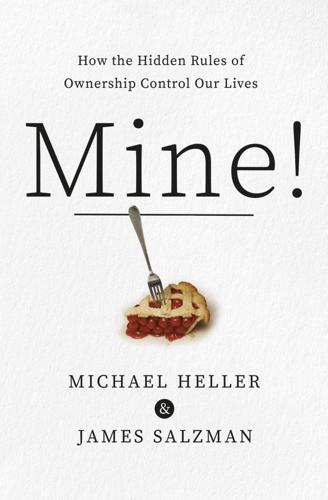
Mine!: How the Hidden Rules of Ownership Control Our Lives
by
Michael A. Heller
and
James Salzman
Published 2 Mar 2021
This is all perfectly legal. To the designers whose work is copied, copying may feel like a rip-off or theft. But it’s not. Theft, like ownership itself, is a legal conclusion, not an empirical fact. In America, there’s no protection for the labor that goes into fashion design. The business model of fast fashion—including global retailers like Zara and H&M—is to copy speedily what’s hot and sell it for less. As a rule, in fashion, everyone copies everyone. Copying design ideas is not theft. Every few years the Council of Fashion Designers of America lobbies politicians for its own Mickey Mouse Protection Act to provide ownership for its members’ fashion design labor, thereby turning copying into theft.
…
Perhaps a no-ownership world creates more value than the rules that lawmakers would likely impose. But who benefits from this value? For 23andMe and its industry cohort, no-ownership would be fine: the companies do not need law to reward their labor. Nor do they rely on shaming and first mover advantages as in fast fashion conflicts. Instead, they can use secrecy and scale to control genetic resources without ownership. Secrecy is straightforward: the industry doesn’t publish its gene databases; it licenses access instead. Here secrecy substitutes for copyright; it can replace patents, too. For example, Elon Musk, founder of SpaceX, says, “We have essentially no patents.

Digital Empires: The Global Battle to Regulate Technology
by
Anu Bradford
Published 25 Sep 2023
TikTok has been the most successful Chinese tech company abroad to date, surpassing Facebook and Google in 2021 as the world’s most popular web domain.103 TikTok straddles the geopolitical divide: it is owned by its Chinese parent company ByteDance, which offers essentially the same short video app in China, known there as Douyin.104 The Chinese fast fashion e-commerce company Shein is another example of a globally successful Chinese tech company. By 2022, the Shein shopping app had been downloaded more times in the US than Amazon.105 The company comprised 28 percent of US fast fashion sales, ahead of popular brands such as H&M and Zara.106 Shein’s staggering growth over the past years has made it the biggest online fashion brand in the world. While the company is wildly successful abroad, interestingly, it is hardly known in China.
…
sh=297a3d4243ef. 104.Lucas Niewenhuis, The Difference Between TikTok and Douyin, SupChina (Sep. 25, 2019), https://supchina.com/2019/09/25/the-difference-between-tiktok-and-douyin/. 105.Emily Dreibelbis, Shein Unseats Amazon as Most Downloaded US Shopping App, PC Magazine (July 19, 2022), https://www.pcmag.com/news/shein-unseats-amazon-as-most-downloaded-us-shopping-appn. 106.Shein Now Leads Fast Fashion, Earnest Research Report (June 24, 2021), https://www.earnestresearch.com/data-bites/shein-leads-fast-fashion/. 107.Tracy Qu, Kuaishou Pulls Its Video App From US After Failing to Dent TikTok’s Market Dominance, S. China Morning Post (Aug. 4, 2021), https://www.scmp.com/tech/big-tech/article/3143800/kuaishou-pulls-its-video-app-us-after-failing-make-dent-tiktoks. 108.Rita Liao, With 170M Users, Bilibili Is the Nearest Thing China Has to YouTube, TechCrunch (May 19, 2020), https://techcrunch.com/2020/05/18/with-170m-users-bilibili-is-the-nearest-thing-china-has-to-youtube/. 109.Global Search Engine Market Share Held by Baidu From January 2018 to September 2021, Statista (July 7, 2022), https://www.statista.com/statistics/1219413/market-share-held-by-baidu-worldwide/. 110.Michael Schuman, Why America Is Afraid of TikTok, The Atl.
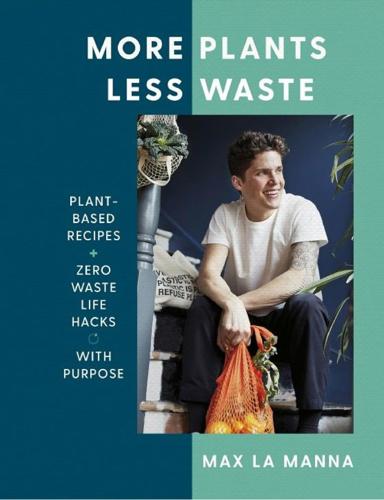
More Plants Less Waste: Plant-Based Recipes + Zero Waste Life Hacks With Purpose
by
Max La Manna
Published 21 Aug 2019
Turn back here to see my guide on how you can start composting – there are lots of different ways; through creating your own compost or using a general food waste bin from your local council. DAY 6: GO BULK SHOPPING If you can, go shopping for bulk ingredients and be sure to bring your bags/jars with you for refilling. DAY 7: BUY VINTAGE Fast fashion is one of the most polluting industries in the world. Shopping more at your local thrift or vintage shop is a less wasteful alternative. DAY 8: NOURISH YOUR BODY Most soap and shampoos come in plastic containers and are hard to recycle. Refill your soap and shampoos at a bulk shop or try making your own from scratch.
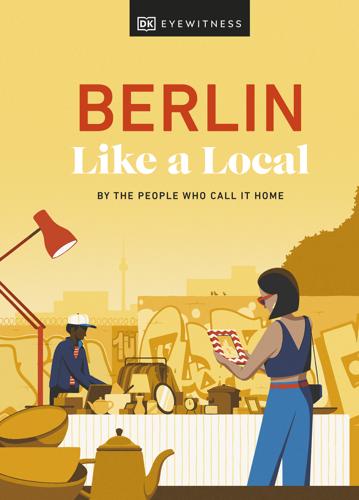
Berlin Like a Local
by
Dk Eyewitness
Kleine Nachtrevue ///windy.watch.traffic Erotic theatre Kleine Nachtrevue puts on mash-ups of kinky-camp performances, including burlesque and naked ballet. g Contents SHOP Berlin’s shopping scene reflects its conscious locals: marginalized voices shine on bookshelves, vintage trumps fast fashion and local designers are championed. g Contents SHOP Record Stores Beloved Markets Sustainable Threads Home Touches Book Nooks Take a Tour: A morning of vintage shopping g SHOP g Contents Record Stores In a city of DJs, producers and club kids, record stores are holy ground – places to scope out the city’s ever-evolving music scene and chart the underground spirit that’s prevailed since the 1970s.
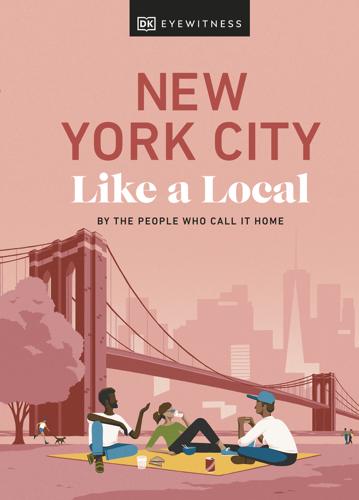
New York City Like a Local
by
Dk Eyewitness
Museum of the American Gangster ///bottom.atomic.sounds The Museum of the American Gangster is housed in a former speakeasy and is packed with exhibits from the Prohibition era. The Back Room ///charmingly.factor.pigs The Back Room is a Prohibition-era speakeasy still open today. It serves its drinks in pretty teacups. g Contents SHOP Forget fast fashion and department stores – New Yorkers love snapping up one-off pieces for their wardrobe and apartment, from cool vintage apparel to quirky home goods. g Contents SHOP Vintage Gems Book Nooks Record Stores Home Touches Indie Boutiques Take a Tour: An afternoon of vintage shopping g SHOP g Contents Vintage Gems Ever the trendsetters, New Yorkers love to reuse past fashions and furniture to make their look unique.
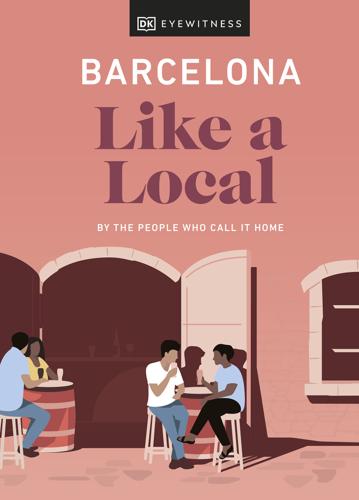
Barcelona Like a Local: by the People Who Call It Home
by
Dk Eyewitness
g SHOP g Contents Indie Clothing Stores ANGLE STORE AVEC STUDIO BLAW STORE BRAVA FABRICS LASER TOPMANTA LADYLOQUITA PITAGORA g Indie Clothing Stores g Contents Google Map ANGLE STORE Map 1; Carrer dels Mirallers, 10, Born; ///cobras.sticky.pads; www.anglestore.com In the fight against fast fashion, Angle Store creates clothing that is both timeless in style and long-lasting in quality. An architect by trade, store owner and designer Claudia Roca applies the principles of modular design to clothing, creating practical and easy-to-match pieces in minimalist shapes and colours. g Indie Clothing Stores g Contents Google Map AVEC STUDIO Map 6; Carrer d’Amigó, 39, Sarrià-Sant Gervasi; ///dish.misfits.blazers; www.avec-studio.com Leading the way in the slow-fashion scene, Avec Studio’s Inés and Alejandro are all about making clothes ethically and responsibly.
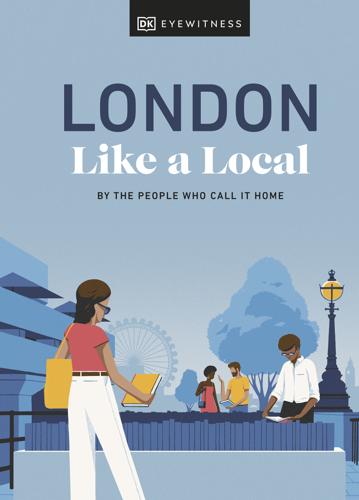
London Like a Local
by
Florence Derrick
g Vintage Gems g Contents Google Map PAPER DRESS VINTAGE Map 3; 352a Mare Street, Hackney; ///rocket.fund.insert; www.paperdressvintage.co.uk This sustainable boutique by Hackney Central station goes by the simple mantra: clothing from the past was built to last, so why waste your money on fast fashion? Pop in to browse vintage garb spanning the 20th century, with retro-styled staff on hand to help you find your look. Come nighttime, platform heels are swapped for trainers when the shop is transformed into a live music and event space. g Vintage Gems g Contents Google Map BEYOND RETRO Map 3; 92–100 Stoke Newington Road, Dalston; ///king.that.system; www.beyondretro.com Whichever area of London you’re in, you’ll see groups of teens and 20-somethings decked out in 1990s athleisure wear, pre-loved aviator jackets and vibrantly patterned headscarves.

Chicago Like a Local
by
DK
Chelsea worked hard to make the space as cozy as possible, filling it with string lights, mismatched cabinets riddled with books, and comfy vintage chairs for visitors to read in. Though she sadly passed away in 2020, her family and friends continue to carry on her legacy, keeping the bookstore open as a volunteer-run not-for-profit. g SHOP g Contents Indie Boutiques Want to move away from fast fashion? You’re in the right city. Chicago is packed with indie shops, offering everything from high-end designer goods to colorful laid-back styles (plus puffer coats, of course). g SHOP g Contents Indie Boutiques TUSK THE SILVER ROOM INDEPENDENCE PENELOPE’S UNA MAE’S ROUND TWO IKRAM STOCK MFG CO VMR g Indie Boutiques g Contents Google Map TUSK Map 3; 3205 West Armitage Avenue, Logan Square; ///obey.ample.luck; 423-903-7093 This oh-so-cool store stocks a gorgeous mix of vintage clothes and quirky pieces by independent makers.
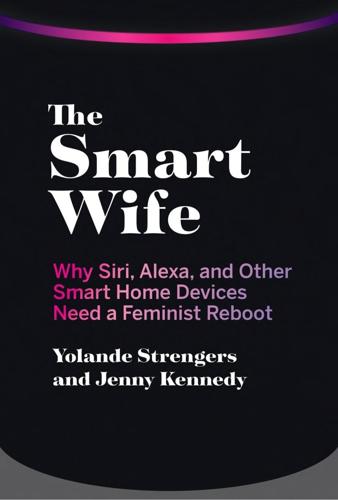
The Smart Wife: Why Siri, Alexa, and Other Smart Home Devices Need a Feminist Reboot
by
Yolande Strengers
and
Jenny Kennedy
Published 14 Apr 2020
In 2018, Look users could crowdsource votes on their outfit; they will eventually be able to make use of a “mirror” that dresses them in virtual clothes.26 Using computer vision, pattern recognition, neural networks, and machine learning, the device is part of a system that will one day be able to design clothes by analyzing the Look’s database of images, identifying emerging trends, and then applying the learning to generate new items from scratch. Such possibilities raise a whole host of other consumption and sustainability concerns associated with fast fashion that support our arguments from chapter 4. There is clearly a market for the device, or else one of the most successful e-commerce and cloud computing companies in the world wouldn’t be making it (with others such as Google also experimenting with similar offerings).27 But it is not without its problems.
…
See also Energy consumption and capitalism, 80, 85, 87, 98, 100, 102, 105–107 crisis in, 85–87 impact of smart wives, 97–98, 99, 101, 225, 226 Environmental housework, 90 EqualAI, 172 Ethical porn, 123 Ethicomp, 137 Ethics and smart wife industry, 107, 158, 172–173, 192, 198, 224–226, 288n58 Ethics Guidelines for Trustworthy AI (European Union), 225 European Union, 106, 225 Everyday sexism, 61, 154 Excessive consumption, 82, 84, 90–91, 97, 186 EXDOLL, 112–113 Ex Machina (film), 14, 15, 64, 67, 125 Eyes of social robots, 56, 68–69 Facebook, 9, 11, 85, 101, 194 Farbotko, Carol, 90 Fast fashion, 186 Fed Up (Hartley), 40 Feldman, Jacqueline, 162, 170, 219 Female cyborgs, characterization of, 148, 152 Female voices used in digital voice assistants, 68, 166–167, 171 Femicide, 199, 201 Feminine Mystique (Friedan), The, 42 Femininity, elevating and transforming, 209–210 Feminism and smart wives, 164–165, 168–174, 219–221 Feminist Chatbot Design Process, 219 Feminist Internet’s Personal Intelligent Assistant Standards, 219 Feminist porn, 123 Feminization of smart wives, 2–5, 14, 211 Fessler, Leah, 162, 163 Fine, Cordelia, 56, 204 FixedIt project, 214–215 Flintstones (TV series), The, 25, 26 FoldiMate laundry-folding robot, 30 Ford, Clementine, 56, 180–181, 204 Fortunati, Leopoldina, 40 Foundation for Responsible Robotics, 116–117, 137, 142 Frank, Lily, 139 Frederick, Christine, 33 Fridges, 35–37 Friedan, Betty, 42 Frigid Farrah personality (Roxxxy), 134–135 Fumo, Nicola, 187 Functionality and usability of smart wives, 31, 39, 183–184 Fun in digital housekeeping, 45–46 F’xa (Comuzi), 219, 220 Gabe, Frances, 32–33 Gartner, 8 Gaslighting, 201 Gates, Bill, 27, 29 Gavankar, Janina, 155 Geek Chic (Inness), 44 Geeks, 44 Geena Davis Institute on Gender in Media, 217 Gender and access to smart wives, 20 and AI ethics, 225, 226 assigned to smart wives, 2, 16–17, 21, 55–65, 70–71, 76–77, 156–157, 161–162, 165, 169, 171–172, 203–204, 211 bias in sci-fi movies, 15 binary and spectrum views of, 20 children shaped by, 56 and digital skills, 9–11, 178–179 and division of housework, 6–7, 32, 40, 42, 46–47 and energy consumption, 87–91 and geekiness, 44 imbalances in computer science, 9–11, 54, 62, 163, 212–214 and interest in and uptake of smart wives, 9, 42, 179, 203 orgasm gap, 122 and pleasance in smart homes, 95 stereotypes applied to computers, 159 and targeting of smart wives, 35–37, 182–186 troubling and design of technologies, 203, 210 and use of sex dolls, 9, 113–114, 116–117, 122–123 General Electric, 9 Gilbreth, Lillian, 33 Gillespie, Craig, 130 Gilmore, Jane, 214–215 Glitches in smart wives examples of, 145–147 and historical framing of women as glitchy, 149–153 language used in retelling stories of, 147–148 Glitch feminism, 169 Global e-Sustainability Initiative, 88 Global Footprint Network, 86 Global Study on Homicide 2018 (UN Office on Drugs and Crime), 199 Good House Wife’s Guide (1955), 93, 110 Google as Big Five member, 85 employment at and gender, 9 ethical guidelines for AI, 226, 288n58 Nest Guard, 195 and Q, 172 renewable energy commitment, 101 RUOK Mate, 192 search engine, 11, 191 and surveillance capitalism, 194, 195 working conditions, 98 Google Assistant, 165, 167 Google Home cost of, 52 encased in container, 12, 49 gendered as female, 2 glitches, 145, 149 and home appliances, 26, 30 illustration of, 3 input from users, 41 market for, 4, 79 “Pretty Please” feature, 168 and sexism, 11 usefulness of, 39 voices, 165, 167 Grace Hopper Celebration, 212 Graham, Mark, 100 Grand Theft Auto V (video game), 136 Graydon, Danny, 25 Greenpeace, 100, 101 Gregg, Melissa, 33 G-spot, 123, 124 Gutiu, Sinziana, 136, 139–141, 142, 157, 223 Haarstad, Håvard, 100 Hadaly (L’Éve Future), 152–153 Hall, Miranda, 194 Halo (video game series), 146, 148 Hammer, William J., 150 Hanna, William, 25 Hannon, Charles, 171 Hansen, Lone, 221 Hanson, David, 146 Hanson Robotics, 146 Haraway, Donna, 4–5, 148, 151–152, 208, 209, 211 Harmony/HarmonyX (RealDoll/RealDollX) creator of, 109, 115 features of, 13, 109, 110, 112, 116, 118, 120, 128, 139 illustration of, 110 Hartley, Gemma, 40–41 #MeToo, 163, 274n74 Heckman, Davin, 93 Hello Sunshine, 218 Henry (RealDollX), 121–122 Her (film), 14, 67, 125, 133 Hikari Azuma (Vinclu), 12–13 Hines, Douglas, 115 Hochschild, Arlie, 191 Holograms, 12, 64, 126–127, 210 Home automation systems, 92–97, 112–113, 175–177, 179–184, 201–202 Home of Tomorrow (Westinghouse), 91–92 Honda, 57–58, 59 ASIMO, 49, 56–57, 58, 67 Honorary citizenship for robots, 146, 174 hooks, bell, 204 Horrigan, Brian, 91–92 Housekeeping (domestic) robots.

They All Came to Barneys: A Personal History of the World's Greatest Store
by
Gene Pressman
Published 2 Sep 2025
Women were entering the workforce in greater numbers than ever before—a trend that would continue steadily through the nineties—and no one was offering them clothes they wanted to wear. The Juniors market had been big in the ’60s. The youthquake had created an appetite for the trendiest, most disposable clothes: fast fashion before fast fashion. It was filled with guys like Bernie Ozer, a squat schlub with a taste for loud hats and junk food, who made a killing scouring the streets for faddish items like pegged jeans and jelly sandals, which he famously spotted on the beaches of Dubrovnik. (His obituary, many years later, proudly called him the “World’s Oldest Junior.”)
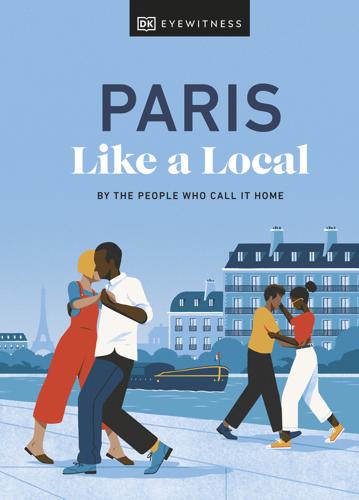
Paris Like a Local
by
Dk Eyewitness
Chercheminippes (www.chercheminippes.fr) is a hotspot for secondhand designer pieces like Louboutin bags and Jimmy Choo shoes – in great condition. g Street Style g Contents Google Map LESS IS MORE Map 5; 22 Rue des Vinaigriers, 10th; ///harps.good.take; 09 52 70 87 60 The eco-conscious crowd swerve fast-fashion promoters and retreat to the comforting corners of this calming boutique, a stone’s throw from Canal Saint-Martin. Owner Laetitia has shed all the frivolous packaging and only stocks items produced by eco-friendly manufacturers. You’ll find a bit of everything: organic products, capsule collections, cute homewares.

Slow
by
Brooke McAlary
Published 22 Aug 2017
While this was an event that garnered a lot of attention simply because of the scale of the devastation, there are endless examples of similarly unsafe work conditions and unfair salaries for garment workers who bring us $5 T-shirts and jeans that cost less than a takeaway pizza. What’s even more offensive are the high-end labels charging massive amounts for clothes made in those same factories, where workers are paid the same paltry wages—as little as $60 a month in some cases. And while the human side of this story is the most tragic, the environmental pollution of fast fashion is second only to that of big oil companies. And this is only the fashion industry—we haven’t even looked at construction, motor vehicles, electronics, furniture, palm oil . . . We live in a time when we can make a difference and support brands that are doing something about issues we care about.
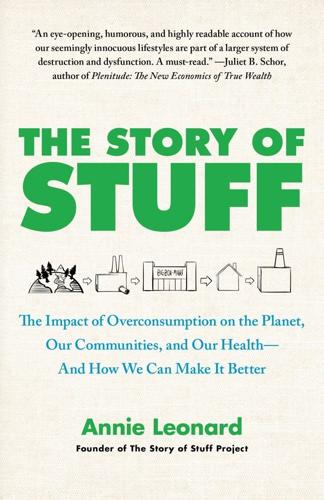
The Story of Stuff: The Impact of Overconsumption on the Planet, Our Communities, and Our Health-And How We Can Make It Better
by
Annie Leonard
Published 22 Feb 2011
H&M In addition to little white T-shirts, the Swedish clothing giant H&M sells more than 500 million items every year, from more than 1,700 stores.45 It’s the world’s third-largest clothing retailer, after Gap Inc. and Spain’s Inditex group, netting more than $440 million even in the relatively sluggish year of 2008.46 H&M is best known for its speed and reaction time—its “fast fashion.” Its clothes can be designed, produced, and distributed (from the drawing board to the hanger) in just twenty days.47 They are not made to last. Trendiness, combined with ridiculously low prices, is the secret to H&M’s success. Here’s lean manufacturing in play: like so many other well-known brand retailers, H&M contracts with the cheapest suppliers available, mostly in Asia and Eastern Europe, where it leverages its size to push wages ever lower and timelines ever shorter.
…
Don’t we get more joy out of things like reading a great book or enjoying a meal with friends than from spending our money on this week’s hottest clothes? Does wearing last month’s or (gasp) last year’s T-shirt really make such a difference? H&M and many consumers clearly believe it does. H&M is an extreme example of the hypervelocity of today’s distribution systems. As fast-fashion consumers get addicted to the ever-changing offerings that blare at them from TV and movies, store windows and ads, H&M is only to happy to keep supplying the Stuff. We’ll see many of the same economic drivers with other products and retailers. Amazon When Internet shopping was just beginning, a lot of people thought this development would be good for the environment and amazing for small, independent businesses.
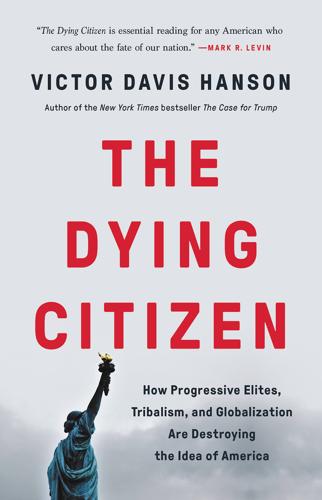
The Dying Citizen: How Progressive Elites, Tribalism, and Globalization Are Destroying the Idea of America
by
Victor Davis Hanson
Published 15 Nov 2021
The public relations themes of the World Cup or the Olympic Games were superficial celebrations of global diversity under agreed-upon shared auspices and values. The unspoken reality was that politically, racially, and religiously diverse athletes looked about the same, adopting similar lifestyles, uniform dress, and the English language during such competitions. So-called fast fashion allows designers to aggrandize basic designs, update and change them monthly, outsource the production of clothes to low-labor-cost countries, use westernized advertising to promote transitory fads and tastes, and then sell trendy, globally homogenized clothes for affordable prices.7 Many young urban women in Africa found emulating Beyoncé’s swagger, tight jeans, and T-shirt blouse preferable to wearing the traditional kanga—and certainly cooler and in sync with what they saw and read on their mobile phones.
…
Tobias Hoonhout, “Bill Gates Dismisses Chinese Coronavirus Coverup: ‘It’s Not Even Time for That Discussion,’” National Review, April 27, 2020, www.nationalreview.com/news/bill-gates-dismisses-chinese-coronavirus-coverup-its-not-even-time-for-that-discussion; Ariel Zilber, “Bill Gates Defends China’s Coronavirus Response: Billionaire Says Beijing ‘Did a Lot of Things Right’ at the Start of the Pandemic and Claims Criticism of the Communist Party Is a ‘Distraction,’” Daily Mail, April 26, 2020, www.dailymail.co.uk/news/article-8259591/Now-not-time-Bill-Gates-defends-China-coronavirus-response.html. 6. Jack Goldsmith and Andrew Keane Woods, “Internet Speech Will Never Go Back to Normal,” The Atlantic, April 25, 2020, www.theatlantic.com/ideas/archive/2020/04/what-covid-revealed-about-internet/610549. 7. For globalized “fast fashion,” see Victoria Ledezma, “Globalization and Fashion: Too Fast, Too Furious,” Semantic Scholar, 2017, www.semanticscholar.org/paper/Globalization-and-Fashion%3A-Too-Fast%2C-Too-Furious-Ledezma/fca5ba60509e4bc821b97082a1b8996c857c0baf?p2df. 8. Global language: Richard Nordquist, “Definition and Examples of Linguistic Americanization,” ThoughtCo., July 3, 2019, www.thoughtco.com/what-is-americanization-linguistics-1688985. 9.
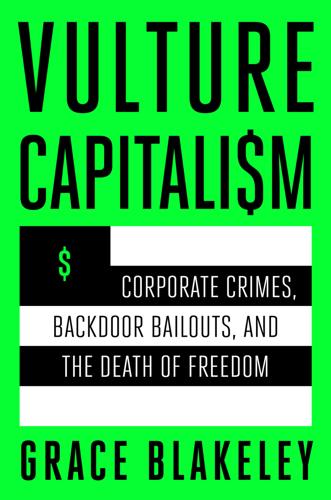
Vulture Capitalism: Corporate Crimes, Backdoor Bailouts, and the Death of Freedom
by
Grace Blakeley
Published 11 Mar 2024
John Smith, Imperialism in the Twenty-First Century: Globalization, Super-Exploitation and Capitalism (New York: Monthly Review Press, 2016); Sarah Butler and Thaslima Begum, “Abuses ‘Still Rife’: 10 Years on from Bangladesh’s Rana Plaza Disaster,” The Guardian, April 24, 2023, https://www.theguardian.com/world/2023/apr/24/10-years-on-bangladesh-rana-plaza-disaster-safety-garment-workers-rights-pay. 4. Viola Wohlgemuth, “How Fast Fashion Is Using the Global South as a Dumping Ground for Textile Waste,” Greenpeace, April 22, 2022, https://www.greenpeace.org/international/story/53333/how-fast-fashion-is-using-global-south-as-dumping-ground-for-textile-waste/. 5. Harriet Agerholm and Colletta Smith, “Growing Share of Under-30s Pay Unaffordable Rent,” BBC News, August 19, 2022, https://www.bbc.com/news/business-62525269. 6.
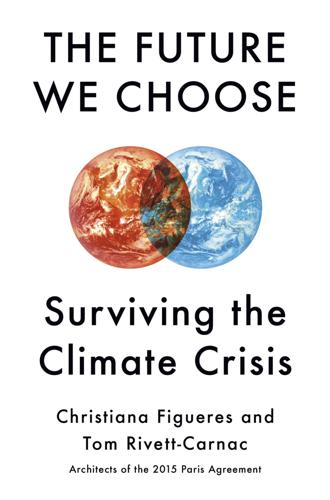
The Future We Choose: Surviving the Climate Crisis
by
Christiana Figueres
and
Tom Rivett-Carnac
Published 25 Feb 2020
Textile production is second only to the oil industry for pollution. It adds more greenhouse gases to our atmosphere than all international flights and maritime shipping combined. Estimates suggest that the fashion industry is responsible for a whopping 10 percent of global CO2 emissions,26 and as we increase our consumption of fast fashion, the related emissions are set to grow rapidly. Our engines of economic growth depend on us continuing to spend money. In the 1920s, some Americans were concerned that a new generation was emerging that had satisfied its needs—and that would lead to a drag on growth. President Herbert Hoover’s Committee on Recent Economic Change in 1929 concluded that advertising was necessary to create “new wants that will make way for endlessly newer wants as fast as they are satisfied.”27 Today consumer goods companies spend a great deal of money to make sure we remain stuck in the consumption cycle.
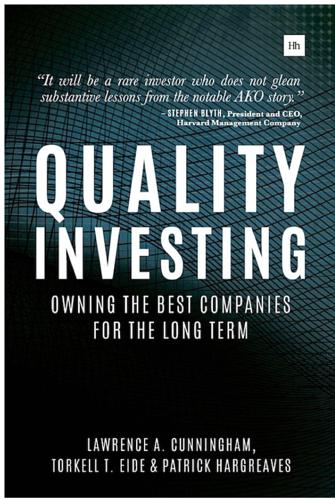
Quality Investing: Owning the Best Companies for the Long Term
by
Torkell T. Eide
,
Lawrence A. Cunningham
and
Patrick Hargreaves
Published 5 Jan 2016
The combination of high gross profits per store, negligible requirement to invest in hefty local infrastructure and a business model that does not rely on advertising makes it easier for Inditex to enter new markets. All stores are expected to be profitable on a stand-alone basis, from the sole Pull & Bear store in Panama to the flagship Zara store in New York. Inditex’s unique fast-fashion operating model produces high gross margins. Since 2000, the company has generated compounded annual growth in sales of 15% and pre-tax income of 17%, with same store sales growth averaging 5% annually and positive in all these years. Despite its vast scale, the highly fragmented nature of the apparel industry means that the company’s market share is still less than 1% in most countries.

Investing to Save the Planet: How Your Money Can Make a Difference
by
Alice Ross
Published 19 Nov 2020
That measurement of carbon risk is not simply the company’s carbon footprint: it includes what actions the company is taking to be more sustainable. That helps to explain why some of these commonly held companies are perhaps not obviously in line with what climate-conscious investors want to invest in. They include H&M, a clothing company typically associated with fast fashion, but which has been making efforts to improve its practices more recently. They also include Microsoft, which took the unusual step in January 2020 of announcing not only that it would ensure it was carbon neutral by 2030, but that by 2050 it would have offset all its historical carbon emissions since its founding in 1975.

Futureproof: 9 Rules for Humans in the Age of Automation
by
Kevin Roose
Published 9 Mar 2021
It will likely be harder for machines to replace TSA agents than the data would indicate. Some jobs are also more robotic than they first appear. Take fashion design, for example. Designing clothes might appear to be a purely creative job that would be impossible for computers to perform. But a lot of modern fashion design—especially at “fast-fashion” chains and e-commerce brands—consists largely of pattern recognition and data analysis, and figuring out how to create variations on an item that is already selling well. As it turns out, this is the kind of task that AI can do very well. In fact, several companies are already using AI to generate fashion designs.

Soulful Simplicity: How Living With Less Can Lead to So Much More
by
Courtney Carver
Published 26 Dec 2017
Call it weird or crazy, but not severe. Dressing with less isn’t a sacrifice, and surprisingly, the challenge isn’t that challenging for most. What’s severe is we are spending money we don’t have on clothes we don’t wear. The way we assess our value with our jean size and our self-worth with our net worth is severe, and the fast fashion trend is severe. Project 333 started with a personal challenge to end closet chaos and further define what “enough” really means to me. One hundred people joined in and one reporter took interest. Since the beginning of the fashion challenge in 2010, so much has changed. A simple closet didn’t just change my wardrobe, it changed my whole life.

Meet the Frugalwoods: Achieving Financial Independence Through Simple Living
by
Elizabeth Willard Thames
Published 6 Mar 2018
This notion that we can future-proof our material possessions is, more often than not, a woeful excuse for overpaying. By instead embracing the used market, I was able to find higher-quality pieces of furniture for far less than their cheap, new, particleboard analogues. Same goes for clothes. The brand names I source from thrift stores are typically better made and more stylish than new and inexpensive fast-fashion outfits intended to be worn and thrown out in the course of a single season. After I slowly outfitted our entire home via the used market for a total sum of $1,000, I was a diehard convert to the world of secondhand. I’d scour the Craigslist furniture section early every Saturday morning and email anything that seemed promising, requesting (exact) dimensions and directions.
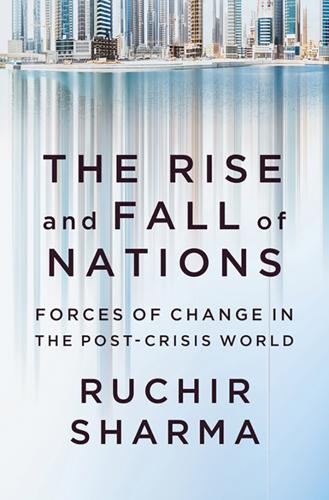
The Rise and Fall of Nations: Forces of Change in the Post-Crisis World
by
Ruchir Sharma
Published 5 Jun 2016
Darius Milek, who made his billion manufacturing shoes that he piles up in big bins and sells out of street kiosks fashioned from metal shipping containers, readily concedes that all his customers really care about is price. That’s why he doesn’t bother with shoe boxes. The superrich Polish elite is emerging as the low-glitz opposite of the Russian elite, anchored by at least half a dozen self-made entrepreneurs who are building their wealth toward a billion with a grinding work ethic. Marek Piechocki, whose fast fashion company is bursting out of the old Gdansk warehouse where it started twenty years ago, is pretty typical. He seems to be always at work, and for years he was known for driving the same old car and showing up at meetings in the same old suit. The Poles’ neighbors in the Czech Republic, another eastern European country that has avoided billionaire bloat since divorcing the Soviet Union, share a similar style.
…
Many of these companies are still run by the founders, who tell similar stories of setting up shop after the collapse of Communism in the late 1980s, then fighting their way through hard times before reaching a critical mass—many of them have annual sales of nearly one billion dollars—where they feel comfortable enough to break out of Poland and start moving into Germany, next door. These companies range from manufacturers in fast fashion and shoes to providers of novel services like debt collection, a profession still undeveloped in western Europe. In late 2014 a Wroclaw entrepreneur said that with bad loans rising across the Eurozone in the wake of the region’s debt crisis, the continent’s secretive banks had started looking for a discreet partner to help retire the problem quietly.
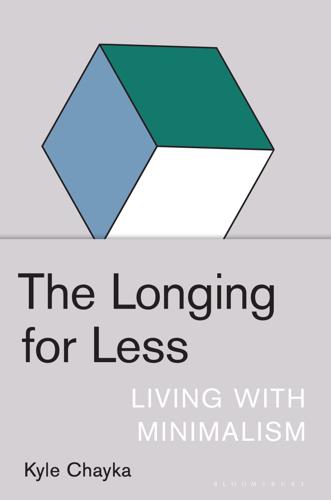
The Longing for Less: Living With Minimalism
by
Kyle Chayka
Published 21 Jan 2020
People also posted surprisingly cheerful selfies after they left the museum, paying testament to the show’s salutary effects: Martin was medicine for the difficult time. I felt it myself when I saw the show just before it closed in January 2017. Immersing myself in the canvases was like a visual spa treatment. Still, commercialized minimalism intruded. The Martin retrospective was sponsored by the Swedish clothing brand COS, owned by the fast-fashion retailer H&M, which produced a series of monochrome shirt jackets and pants with grid patterns that were sold glibly on a rack in the gift shop: high art, ready to wear. They were marketed as inspired by the artist’s personal fashion choices, a functionalist range of heavy shirts and studio jackets splattered with paint, documented in vintage black-and-white photographs.
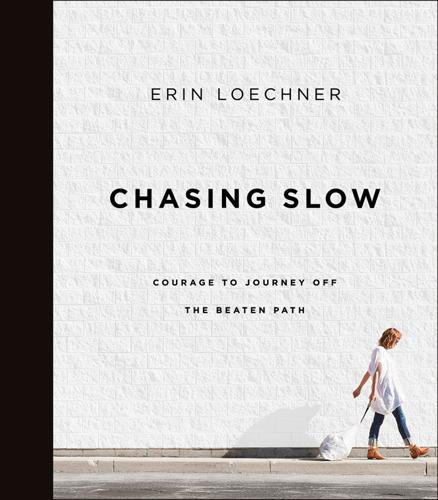
Chasing Slow: Courage to Journey Off the Beaten Path
by
Erin Loechner
Published 10 Jan 2017
Once, after a particularly crazy sale, I asked my boss if she ever thought about the hands that made the clothing, about the minds that stitched the seams. “I can’t,” she said, picking up a split silk blouse that had been left behind. “It’s too depressing.” My rule in the great slow fashion (quality!) versus fast fashion (quantity!) debate is simple: Use what you have. Shop for what you’ll use. Take stock of what you have and wear it. Use it. This is the best way to honor those who have made your clothing. An aside: You needn’t establish rules for why it may or may not be appropriate to wear, say, yoga pants to the grocery store.
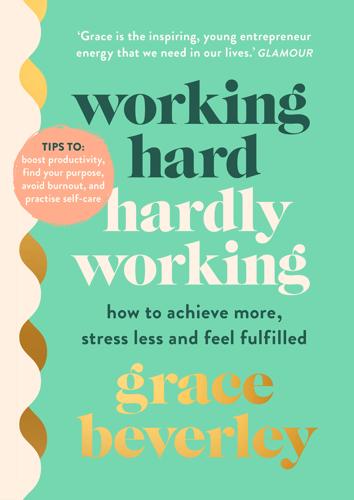
Working Hard, Hardly Working
by
Grace Beverley
On 29 April 2019, we announced the arrival of TALA, the business of my dreams: a fashion brand that doesn’t compromise. TALA’s birth, to me, represented no longer having to choose between style, sustainability and price point, and was the culmination of my love for fashion and distaste for the horrors of the fast fashion industry. Bringing the business out into the world was nothing short of thrilling, and was lovingly accompanied by a slew of post-birth Instagram posts, the enthusiasm of which could only be matched by new mothers. On that same day, I was due to hand in 35,000 words of coursework. Then, a week later on 7 May, we were hard-launching TALA into the industry with an amount of stock dwarfed only by the amount we had to prove.

Uncanny Valley: A Memoir
by
Anna Wiener
Published 14 Jan 2020
Even racks at the dry cleaner suggested a city in transition: starched police uniforms and synthetic neon furs, sheathed in plastic, hung beside custom-made suits and machine-washable pullovers. Homeless encampments sprouted in the shadows of luxury developments. People slept and shat and shot up in the train stations, lying beneath advertisements for fast fashion and productivity apps, as waves of commuters stepped delicately around them. I woke up one morning to the sound of someone howling for mercy on the corner of my block: a woman screaming bloody murder, dragging one leg, wearing nothing but a torn T-shirt emblazoned with the logo for a multinational consumer-electronics company.
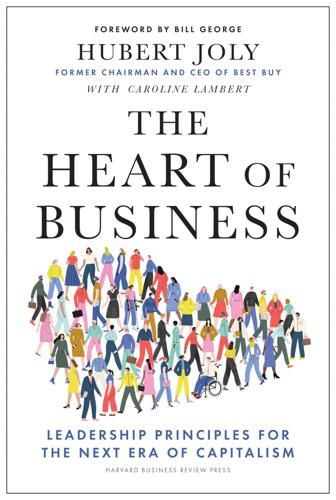
The Heart of Business: Leadership Principles for the Next Era of Capitalism
by
Hubert Joly
Published 14 Jun 2021
They want to do business with companies they respect and trust to be competent, ethical, and actively improving the society around them.6 Consumers increasingly will turn away from companies that do not meet these standards. One of the points that my children raised over our dinner was the forced obsolescence of the products they buy, how quickly tech companies stop supporting older products and how often some clothing retailers come up with new lines, a phenomenon known as “fast fashion.” They see these tactics as merely a profit strategy, and not beneficial to them or the planet. Multiple industries, from food to fashion, are feeling the pressure to clean up their climate act. Concerns over global warming are shaping behavior—and consumption. Before Covid-19 devastated air travel, one in five people said they were flying less out of concern over the environment.7 A “flight shame” movement was spreading beyond Sweden’s borders.
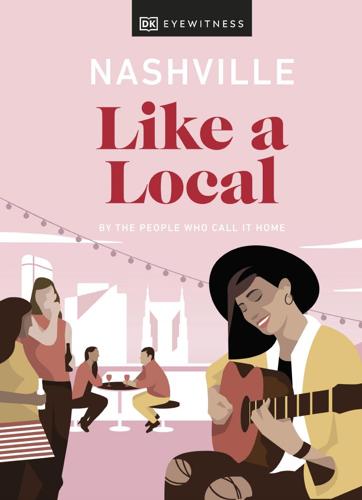
Nashville Like a Local: By the People Who Call It Home
by
Dk Eyewitness
Published 28 Sep 2021
K I R K W O O D A V E N U E K I R K W O O D A V E N U E Sevier Sevier Park Park 112-113_LAL_Nashville.indd 112 11/08/2021 12:47 E E H H D O U G L A 0 met 0 me er t s er 0 met 0 me er t s er 250 D 250 250 2 T T S O U G L A VS E N U N A V E N U N U H U U H U T T U 0 yar 0 y ds ar 0 yar 0 y ds ar 250 U 250 250 2 T E SO E SO A E SO E SO K AV H AV AV H AV H H AV T AV AV T E A T AV H U H H U H A S A S 12T 12T T T O O S H W 12T T W H W O O D AV 10 S A morning of OA S 12T O O DH W O O A D AV 10 10 V E N N U EAV E E N S U E S E E Browse for a gift at E U U O U N N E SERENDIPITY E U EV indie shopping V V R Discover unique and ethical goods, like A A H H t-shirts printed with eco-friendly ink and L I N D T T D E E NL I N D EN 9 9 A V VE N N U EAV E E N U jewelry made by survivors of sex trafficking. E Forget fast fashion. Here in Nashville, big brands take a backseat to artisan makers, social Find a new outfit at enterprises, and eco-conscious entrepreneurs. EMERSON GRACE Fashion boutique And nowhere is this felt more than in 12 South, a D D Stop by this airy women’s boutique where HERO is run by stylist R RA residential neighborhood with a charming half-A A owner and former fashion exec Kimberly Claudia Robertson V V E E handpicks each stylish piece.
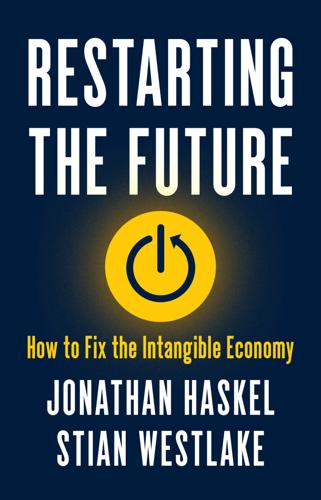
Restarting the Future: How to Fix the Intangible Economy
by
Jonathan Haskel
and
Stian Westlake
Published 4 Apr 2022
They concluded that national concentration has risen and local concentration has fallen; Lanier Benkard, Ali Yurukoglu, and Anthony Lee Zang find the same.6 The reason identified by Hsieh and Rossi-Hansberg is a profoundly intangible one: “ICT-based technologies and adoption of new management practices have finally made it possible for firms outside of manufacturing to scale production over a large number of locations.”7 To put it another way, because intangibles are scalable, services businesses with valuable intangibles (such as popular brands, strong management practices, or distinctive product offerings) can spread across many local markets. If that sounds abstract, think of national and international retail chains, which invest heavily in branding, software (for stock control, customer loyalty programmes, and e-commerce), relationships with suppliers (the secret sauce of “fast fashion”), and new product development—all intangible investments. Think of the pub chain JD Wetherspoons, of the midmarket chains that rapidly grow from successful independent restaurants, of Zara and IKEA. A world with lots of these chains, whose business models rely on intangibles in a way most independent stores do not, is likely to have more intense local competition that does not show up in the national figures.
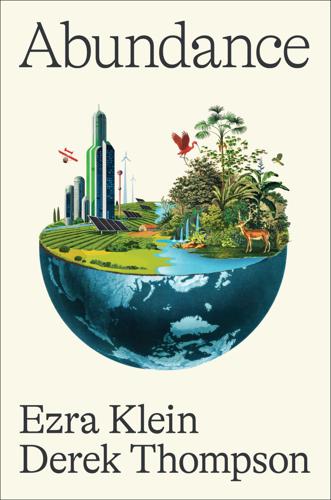
Abundance
by
Ezra Klein
and
Derek Thompson
Published 18 Mar 2025
In the case of evolution, the victory is yet only partial. We do not have decades or centuries to convince the world to act on climate change. To the extent that degrowth has a specific climate plan, it is to shut off or scale down areas of production it deems destructive, like military investment, meat and dairy production, advertising, and fast fashion. There is some appeal to this. All of us can identify some aspect of the global production system that seems wasteful, unnecessary, or harmful. The problem is that few of us identify the same aspects of the global production system. Take meat and dairy production. When we think of humanity’s land footprint, we mostly think of buildings and roadways.

Frugal Innovation: How to Do Better With Less
by
Jaideep Prabhu Navi Radjou
Published 15 Feb 2015
This system has since helped produce 100,000 pairs of women’s jeans with 100% recycled water, saving 12 million litres of water. The company is currently spreading this water recycling system to other suppliers and collections. In 2014, Levi Strauss’s Dockers brand launched the Wellthread collection, a new line of clothing designed explicitly for long-term durability – the opposite of disposable, fast fashion. All Wellthread products are made of 100% cotton fabrics, thread and pocketing, and their dyeing process uses less energy and water. The garments are designed with reinforced pockets and buttonholes to extend their lifespan, and there are locker loops and overlapped shoulder seams on T-shirts to support hang drying instead of machine drying.

There Is No Planet B: A Handbook for the Make or Break Years
by
Mike Berners-Lee
Published 27 Feb 2019
Doubling the speed to 30 knots would cut the journey time from two weeks to one but since water resistance goes with the square of the speed, the energy use would go up four-fold. So, patience is good. By contrast, the air freight alternative requires about 2 kWh per tonne per mile18, but can get there the same day. The tiny portion of goods that travel by air are mainly luxuries (such as asparagus in winter and fast-fashion clothing). Crisis management How bad are boats? And can they be electrified? 115 in poorly-managed supply chain logistics also resorts to air freight. (In a former life, working for a boot company, air freight was the very expensive emergency option when stock management had gone astray.) However, whilst the energy and carbon footprints of shipping are good ‘bang for buck’, we’ve already seen that we need to cut out the fossil fuel altogether before long.
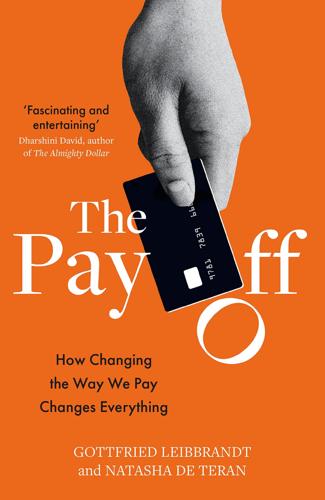
The Pay Off: How Changing the Way We Pay Changes Everything
by
Gottfried Leibbrandt
and
Natasha de Teran
Published 14 Jul 2021
Like Amex, Klarna makes money by charging merchants fees, although its fees are lower, at around 2 per cent, compared with 3–4 per cent for Amex.2 Klarna has been a staggering success from a business standpoint: today, the company is worth more than $10 billion. Its 90 million consumers are only a one-click process, a speedy ‘soft’ credit check and a mere twentyfive seconds away from paying for their purchases on borrowed money. Consumers who sign up or download the app are told where they can spend the money they don’t have, which is mostly in fast fashion and beauty stores given Klarna’s millennial target market – short on cash but keen on clothes. For delinquent borrowers, there’s an added bonus: those soft credit checks don’t trigger official records of your borrowing. The business model is clearly popular, despite concerns being raised about whether it encourages younger customers in particular to rack up debts they can’t afford to pay off: alongside Klarna, there’s now Clearpay, Laybuy and more – Amazon and PayPal have climbed on board, among others.
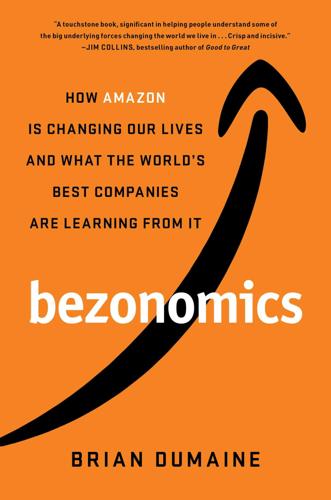
Bezonomics: How Amazon Is Changing Our Lives and What the World's Best Companies Are Learning From It
by
Brian Dumaine
Published 11 May 2020
As she told the Los Angeles Times: Tracey Lien, “Stitch Fix Founder Katrina Lake Built One of the Few Successful E-Commerce Subscription Services,” Los Angeles Times, June 9, 2017. “Fundamentally what we’re offering”: Tren Griffin, “Opinion: 7 Business Rules from Stitch Fix’s CEO That Don’t All Come in a Box,” MarketWatch, November 25, 2017. It is, however, the company’s shrewd: Samar Marwan, “Mother-Daughter Duo Raise $120 Million for Their Fast-Fashion Brand Lulus,” Forbes, May 16, 2018. As Noelle Sadler: Kimberlee Morrison, “How Instagram Is Growing Its Social Shopping Efforts,” Adweek, April 7, 2017, https://www.adweek.com/digital/how-instagram-is-growing-its-social-shopping-efforts/. Chapter 13: Amazon Unbound The conglomerates of the 1960s and 1970s: Jeffrey Cane, “ITT, the Ever-Shrinking Conglomerate,” New York Times, January 12, 2011.

Vaxxers: The Inside Story of the Oxford AstraZeneca Vaccine and the Race Against the Virus
by
Sarah Gilbert
and
Catherine Green
Published 7 Jul 2021
In the wider world, many people who worked in offices in cities will not return to exactly the same way they lived and worked before the pandemic. Some will look for alternatives to the time-consuming and expensive commute, the Pret lunch and £3 latte and the frequent updates to their work wardrobe. As we have learned that we can live without frequent flying and fast fashion, we have learned too how much we value our schools and hospitals. Both will need extra resources to recover from the damage and neglect incurred during the pandemic. Perhaps as societies begin to open up again, some of that support will come from people who have wanted to volunteer to do something positive during the pandemic, whether helping at vaccination centres, or supporting those in need in their local community.

A New History of the Future in 100 Objects: A Fiction
by
Adrian Hon
Published 5 Oct 2020
Once you left, the work of actually coding the 3-D avatar was typically, as ever, left to lower-paid artists who received only a fraction of your payment. Labor relations notwithstanding, avatars became an affordable and environmentally-friendly alternative to the ugly habit of buying cheap, disposable clothing fueled by “fast fashion” trends. In the early twenty-first century, around three hundred liters of water was required to manufacture a single T-shirt. A pair of jeans would run to over a thousand liters of water, blowing past the limits of sustainability in a world that had to save every drop of clean water it had. At this time, avatars remained largely anthropomorphic.
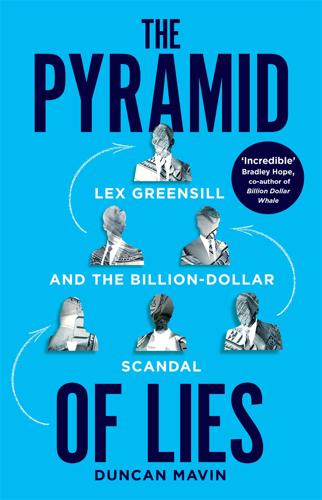
The Pyramid of Lies: Lex Greensill and the Billion-Dollar Scandal
by
Duncan Mavin
Published 20 Jul 2022
Much of Lex’s fashion sense came from a niche, tongue-in-cheek British magazine called Chap, which celebrated conservative styles like tweed and pocket squares. The magazine, and a book called The Chap Manifesto, became famous for a while because the publisher organized street protests when the preppy fast-fashion brand Abercrombie & Fitch planned to move into Savile Row. On weekends in the office, when other bankers would dress down, Lex would still wear a suit and tie. In rare moments of relaxation, usually back at his home in Cheshire, he wore garishly coloured trousers – purple, yellow or pink – and he almost never wore trainers, except when he was running.
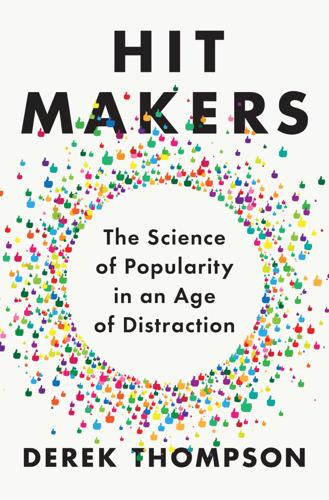
Hit Makers: The Science of Popularity in an Age of Distraction
by
Derek Thompson
Published 7 Feb 2017
Several decades of logo fever came to an abrupt end in the Great Recession. Nearly half of families experienced a job loss, a pay cut, or reduced hours, and youth unemployment soared to almost 19 percent. The richly embroidered logos on Ralph Lauren polo shirts were suddenly unwelcome in a financial downturn, and cheaper “fast-fashion” retailers like H&M, Zara, and Uniqlo grew. In a new age of cool, the smartphone screen displaced the embroidered logo as the focal point of teen identity. It was once sufficient to look good in a high school hallway, but today Snapchat, Facebook, and Instagram are all high school hallways, where young people perform and see performances, judge and are judged.
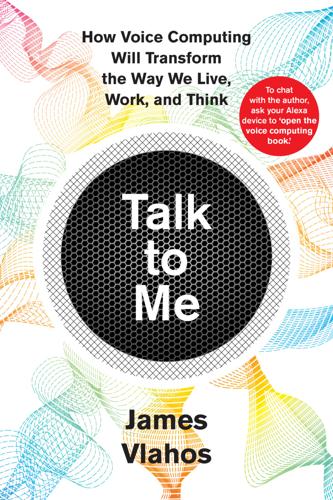
Talk to Me: How Voice Computing Will Transform the Way We Live, Work, and Think
by
James Vlahos
Published 1 Mar 2019
With voice applications, known as “actions” on the Assistant platform and “skills” on Alexa? Both? Since 2016 companies have been throwing a lot of approaches against the wall to see what sticks. Chatbots from Estée Lauder, Sephora, and L’Oréal give skin-care recommendations and help you choose the optimal shade of makeup. Uniqlo, the “fast fashion” retailer, has a bot called IQ that helps with shopping; for instance, you could write “I want new pants” and the bot would fire back some options with photos. Kia has text-based and voice bots that help shoppers get information about different car models, price out options, and answer questions like “Show me an SUV that gets at least twenty-five miles per gallon in the city.”

The Measure of Progress: Counting What Really Matters
by
Diane Coyle
Published 15 Apr 2025
For example, the variety of product characteristics has increased enormously. Everyday experience makes it clear that the range of goods available in advanced economies has been 10 P r o du c t i v i t y w i t h ou t P r odu c t s 55 increasing over time. Examples include the phenomenon of fast fashion, personalised biomedical treatments, new flavours of many food items, the number of book titles published, and many other indicators. Yet statistics on variety are not part of the standard suite of economic metrics, and it is difficult to find recent systematic data. The current balance of opinion among economists is that there is some upward bias in price indices, but the extent of the bias has probably declined over recent years and so does not help resolve the puzzle of slower productivity growth (Ahmad et al. 2017, Aghion et al. 2019, Reinsdorf and Schreyer 2020).
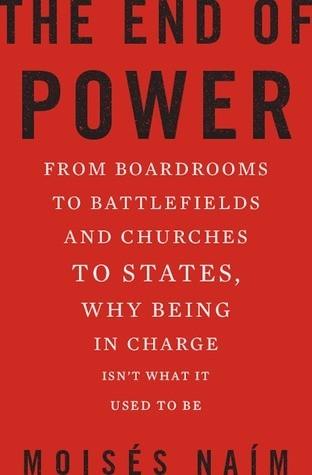
The End of Power: From Boardrooms to Battlefields and Churches to States, Why Being in Charge Isn’t What It Used to Be
by
Moises Naim
Published 5 Mar 2013
Thom and Greif, “Intangible Assets in the Valuation Process: A Small Business Acquisition Study”; Galbreath, “Twenty-First Century Management Rules: The Management of Relationships as Intangible Assets.” 28. Interview with Lorenzo Zambrano, Monterrey, Mexico, 2011. 29. See The Gap Inc. and Inditex annual reports from 2007 to 2011. 30. Data obtained from Zara’s corporate website: http://www.inditex.com/en/who_we_are/timeline. 31. “Zara: Taking the Lead in Fast-Fashion,” Businessweek, April 4, 2006. 32. “Retail: Zara Bridges Gap to Become World’s Biggest Fashion Retailer,” Guardian, August 11, 2008. 33. John Helyar and Mehul Srivastava, “Outsourcing: A Passage Out of India,” Bloomberg Businessweek, March 19–25, 2012, pp. 36–37. 34. Ben Sills, Natalie Obiko Pearson, and Stefan Nicola, “Power to the People,” Bloomberg Markets, May 2012, p. 51. 35.

The Metaverse: And How It Will Revolutionize Everything
by
Matthew Ball
Published 18 Jul 2022
AWS, in other words, benefits even if other cloud providers take a greater share of future growth. However, Amazon’s efforts to build Metaverse-specific content and services have been largely unsuccessful and arguably less of a priority compared to more traditional markets, such as music, podcasting, video, fast fashion, and digital assistants. According to various reports, Amazon has spent hundreds of millions each year on Amazon Game Studios, which focused on Amazon founder Jeff Bezos’s goal of making “computationally ridiculous games.” However, most of these titles ended up cancelled before release (though not until their development budgets exceeded the lifetime budgets of most hit games).
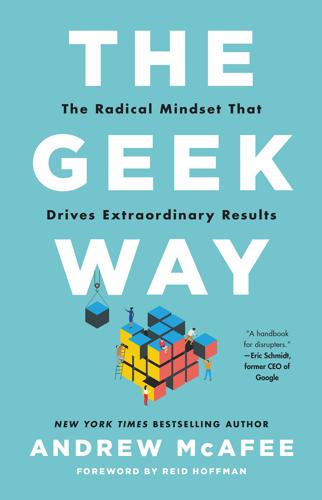
The Geek Way: The Radical Mindset That Drives Extraordinary Results
by
Andrew McAfee
Published 14 Nov 2023
As part of this work, I wrote many case studies: short documents describing a business situation that are used as the basis for class discussions at Harvard and other business schools. These case studies covered a lot of terrain. I wrote about how the CVS drugstore chain rewrote its software to try to improve customer service, and how the global “fast fashion” retailer Zara used mobile technology to sense what people all over the world wanted to wear and quickly respond to this demand. I wrote about a European investment bank that was experimenting with an early internal blogging platform and about a strange new online reference called Wikipedia. I traveled to Argentina to look at an innovative soybean farmer; to Japan, where the owner of a taxi company built an automated ride-hailing service several years before Uber did; and to the port of Dubai, which wanted to better monitor all the cargo it received.

Shutdown: How COVID Shook the World's Economy
by
Adam Tooze
Published 15 Nov 2021
Tati, the emblematic discount retailer in the Barbès neighborhood of northern Paris, a pillar of affordable retailing since the 1940s, closed down in July.26 Gibert Jeune, one of the legendary bookshops of Paris, began closure negotiations with its unionized workforce.27 In Britain, Laura Ashley, a fashion chain synonymous with the eighties chic of Princess Diana, tumbled into administration.28 Among those that went under were the department store Debenhams and fast fashion pioneer Topshop, putting 25,000 jobs at risk.29 Clothing and sandwich stalwart Marks & Spencer survived, but its debt was downgraded to junk and 8,000 workers lost their jobs. Because it was a crisis of the service sector, the coronavirus recession was gendered in its impact. It was a “shecession.”30 This was bitterly ironic.

Doppelganger: A Trip Into the Mirror World
by
Naomi Klein
Published 11 Sep 2023
Decades of wringing out every possible efficiency means that each link in the chain—the mines and industrial farms where raw materials are extracted; the factories and slaughterhouses that turn those inputs into parts and finished products; the trains and ships that carry them across continents and oceans; the warehouses that sort and store them to be ready at the click of a cursor; the trucks and cars that deliver them when the click arrives; the mountains of waste and poisoned waterways where the detritus from each stage ends up; the glimmering playgrounds where the ultrarich enjoy their spoils—carries a distinct yet numbingly familiar story of depredation. What is shocking is less the stories themselves than the fact that they no longer seem to provoke much shock at all. A quarter of a century after I published No Logo, we seem to take it for granted that a piece of fast fashion worn by a young woman in New York or London or Toronto means that other young women have to risk being incinerated in their garment factories in Dhaka, Bangladesh. Or that suicide nets to catch desperate electronics workers are a normal part of the architecture in a factory making our cell phones in Shenzhen, China.

Moon Mexico City: Neighborhood Walks, Food & Culture, Beloved Local Spots
by
Julie Meade
Published 7 Aug 2023
Traders have sold goods here since the colonial era; today, the only notable establishment in this historic arcade is legacy hat shop Sombreros Tardan. Turn left (west) onto bustling pedestrian street Madero. The historic street Madero is closed to automobile traffic and perfect for strolling. 2 There are historic palaces all along Madero, many incongruously occupied by fast-fashion retailers and convenience stores. On the corner of Isabel la Católica, the marvelous Antigua Joyería La Esmeralda was originally built for an upscale jeweler. Designed in the French style popular in 19th-century Mexico, the first floor is now a retail shop, while the top floors are home to the lovely Museo del Estanquillo.
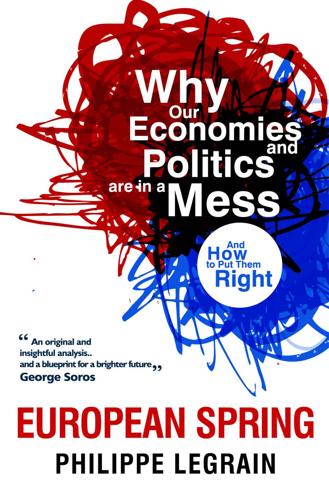
European Spring: Why Our Economies and Politics Are in a Mess - and How to Put Them Right
by
Philippe Legrain
Published 22 Apr 2014
Siesta might in fact be competitive after all – but lumping it together with a bunch of underperforming companies might obscure that. Think of America’s consumer-electronics industry: overall, it is not globally competitive, but one company – Apple – is extremely so. The same applies in Spain, where companies such as Inditex, which owns Zara and other fast-fashion clothing stores, are global superstars, while many smaller companies are laggards. Clearly, the Spanish economy would perform better if the inefficient firms improved (or closed), but it might still be a successful exporter thanks to that handful of superstars. Looking at an economy-wide average, which also includes the public sector and companies that scarcely compete with foreigners, such as local restaurants and hairdressers, is even more misleading.175 Imagine the pay of Irish civil servants doubles without their productivity increasing.

The Default Line: The Inside Story of People, Banks and Entire Nations on the Edge
by
Faisal Islam
Published 28 Aug 2013
Lorna Fitzsimons, the affable former Labour MP for Rochdale, runs it and has commissioned a series of consulting reports on what parts of the textile supply chain could return. The answer is: almost all of it – even weaving and spinning. Brands such as ASOS, Pacific White and Boohoo.com explain why this can happen. Boohoo’s offices are housed in a former mill right in the centre of Manchester. As with ASOS and Pacific White, it is internet-based fast fashion that is changing the economics of offshore clothes manufacturing. There are bags of product in the basement, high-end design and sample production on one floor, and a catwalk, studios and models for online catalogues, filming and photography on another. Under the ‘made in China’ model right now, a firm would have to put in their whole order for spring 2015 by October 2014.

Not Working: Where Have All the Good Jobs Gone?
by
David G. Blanchflower
Published 12 Apr 2021
Toys “R” Us, Calvetron Brands, which owns women’s wear chains including Jacques Vert and Precis, and the electronics retailer Maplin have all entered administration. Mother-care and Carpetright are also in trouble. The children’s goods retailer revealed plans to close fifty stores while Carpetright, Fildes reports, has been forced to pursue a rescue rights issue after closing ninety-two stores. Fast-fashion chain New Look also plans to close up to sixty stores while food chains Prezzo, Jamie’s Italian, and Byron Burger have also closed outlets. N. Brown, a Manchester-based company that has been operating since the 1850s, has begun a consultation process to close its remaining twenty high street stores.44 Not good.

Aerotropolis
by
John D. Kasarda
and
Greg Lindsay
Published 2 Jan 2009
Even in textiles, the most ruthless and primitive industry, the lowest costs matter less than speed, smarts, and resilience. It typically takes a year for a mainstream brand to design a line, source it, make it, and literally ship it to its stores. Li & Fung does it for them in six weeks with its massively parallel network of factories. Fashion has been superseded by the “fast-fashion” labels of H&M, Zara, Uniqlo, and Topshop, all of which restock their shelves from the Delta via air, often courtesy of Li & Fung. As a report by the American Chamber of Commerce in Hong Kong put it: “Clothing is increasingly considered a perishable good.” Or a disposable one. Either way, the fact remains that the Delta is once again stuck at the bottom of the smiley curve, while this time Hong Kong profits at both ends.

Lonely Planet London
by
Lonely Planet
Published 22 Apr 2012
Reiss Offline map Google map ( www.reiss.co.uk; 14-17 Market Pl W1; Oxford Circus) Reiss suddenly came out of the shadows when the Duchess of Cambridge (aka Kate Middleton) was photographed wearing one of its numbers. Now a classic English label of understated fashion. TopShop (Click here) The mother of fast fashion seldom needs introducing; mass hysteria is guaranteed for the launch of special collections such as Kate Moss’s. Warehouse Offline map Google map ( www.warehouse.co.uk; Argyll St W1; Oxford Circus) Somewhere between TopShop and Oasis in the fashion stakes. Lonely Planet’s Top Choices Silver Vaults (Click here) The world’s largest collection of silver, from cutlery to jewellery.

The Rough Guide to New York City
by
Rough Guides
Published 21 May 2018
CENTRAL PARK Introduction to New York City For dynamism, cultural impact and sheer diversity, New York City is unbeatable. High finance, art, architecture, music, food... it’s all here, in plenitude and peak form. You can eat or drink your way through the cuisines of the world, drape yourself in fast fashion or couture, gape at old masters in the Met or subversive art on the street, stumble across a Midtown film set or catch a forgotten movie at a repertory theatre. Icons familiar to the big screen – and popular imagination – are often staring you in the face, whether that’s the raised torch of the Statue of Liberty, the bright lights of Times Square, the illustrious Empire State Building or the waterfront promenade at Brooklyn Heights.

Western USA
by
Lonely Planet
Asian Americans have brought Buddhism, Hinduism, Sikhism and Islam, and New Age spirituality isn’t a stranger here. The Southwest has its own anomalies. In Utah, 58% of the state’s population identifies as Mormon. The church stresses traditional family values, and drinking, smoking and premarital sex are frowned upon. You won’t see much fast fashion or hear much cursing. Family and religion are also core values for Native Americans and Hispanics throughout the Southwest. For the Hopi, tribal dances are such sacred events they are mostly closed to outsiders. And although many Native Americans and Hispanics are now living in urban areas, working as professionals, large family gatherings and traditional customs are still important facets of daily life.

Southwest USA Travel Guide
by
Lonely Planet
What lifestyle commonalities, after all, can be seen in the New Age mystics of Sedona, the businesspeople, lounge singers and casino workers of Las Vegas and the Mormon faithful of Salt Lake City? Half the fun of touring the Southwest is comparing and contrasting all these different identities. Utah’s heavily Mormon population stresses traditional family values; drinking, smoking and premarital sex are frowned upon. You won’t see much fast fashion or hear much cursing here. Family and religion are also core values for Native Americans and Hispanics throughout the region. For the Hopi, tribal dances are such sacred events they are mostly closed to outsiders. And although many Native Americans and Hispanics are now living in urban areas, working as professionals, large family gatherings and traditional customs are still important facets of daily life.
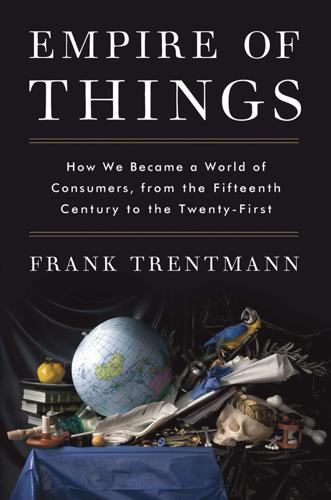
Empire of Things: How We Became a World of Consumers, From the Fifteenth Century to the Twenty-First
by
Frank Trentmann
Published 1 Dec 2015
For this to happen, we need a more honest public debate about how standards and habits have come to be what they are, a keener appreciation of changes in the past and alternatives for the future, and a recognition that, even today, in rich societies the most materially intensive practices are not distributed evenly. One lesson from history is that we are wrong to take our current standards as given or to assume that our lifestyles will and ought to continue into the future, just more efficiently serviced. Air-conditioning, hot showers, fast fashion and budget city-breaks are not an inherent part of human civilization. The high-flying, multitasking consumer lifestyle, in particular, which requires so much coordination and with it mobility and resources, has been a quite recent phenomenon, driven by the highly educated professional middle classes, who have taken standards of productivity from the world of work and injected them into the world of leisure, radically intensifying it in its course.